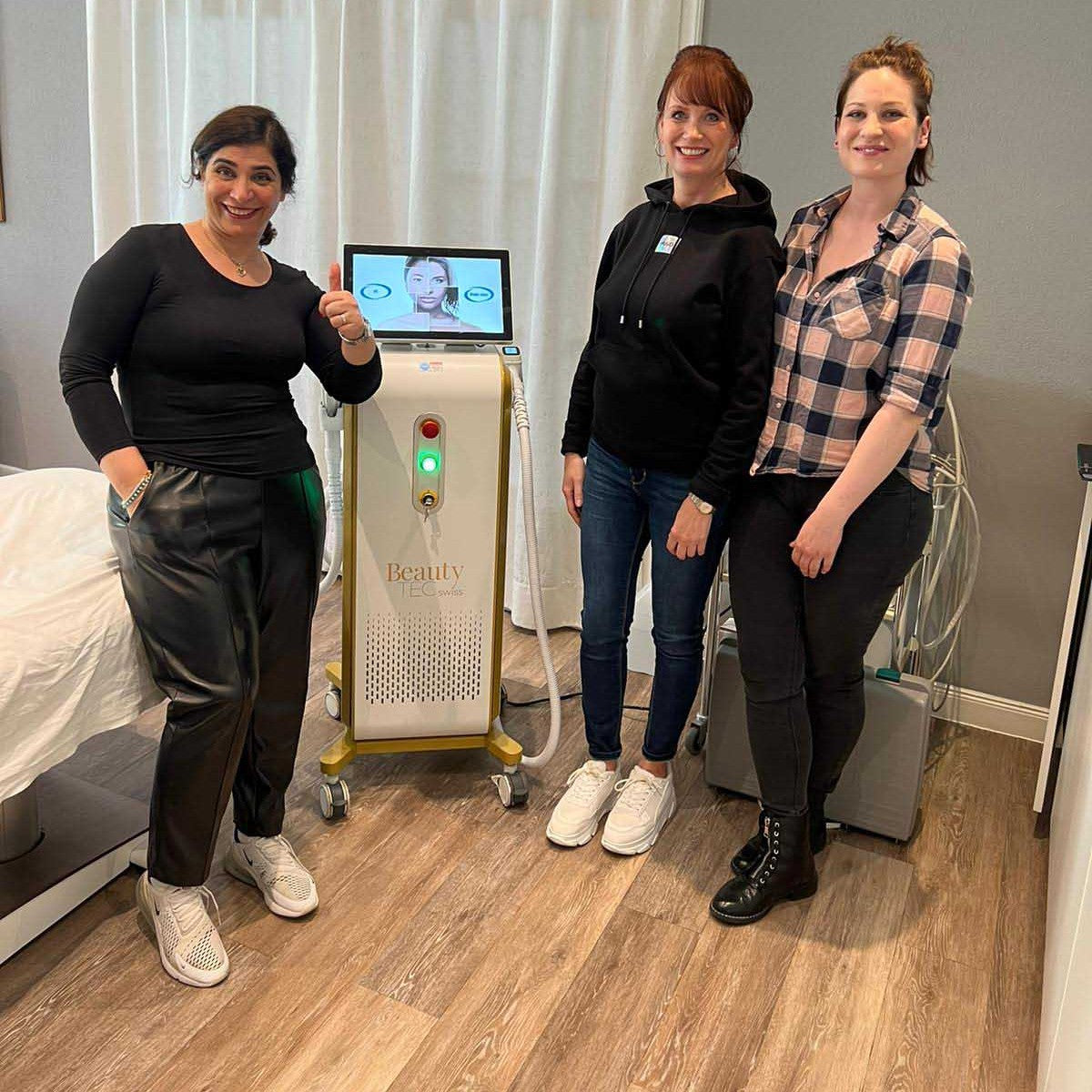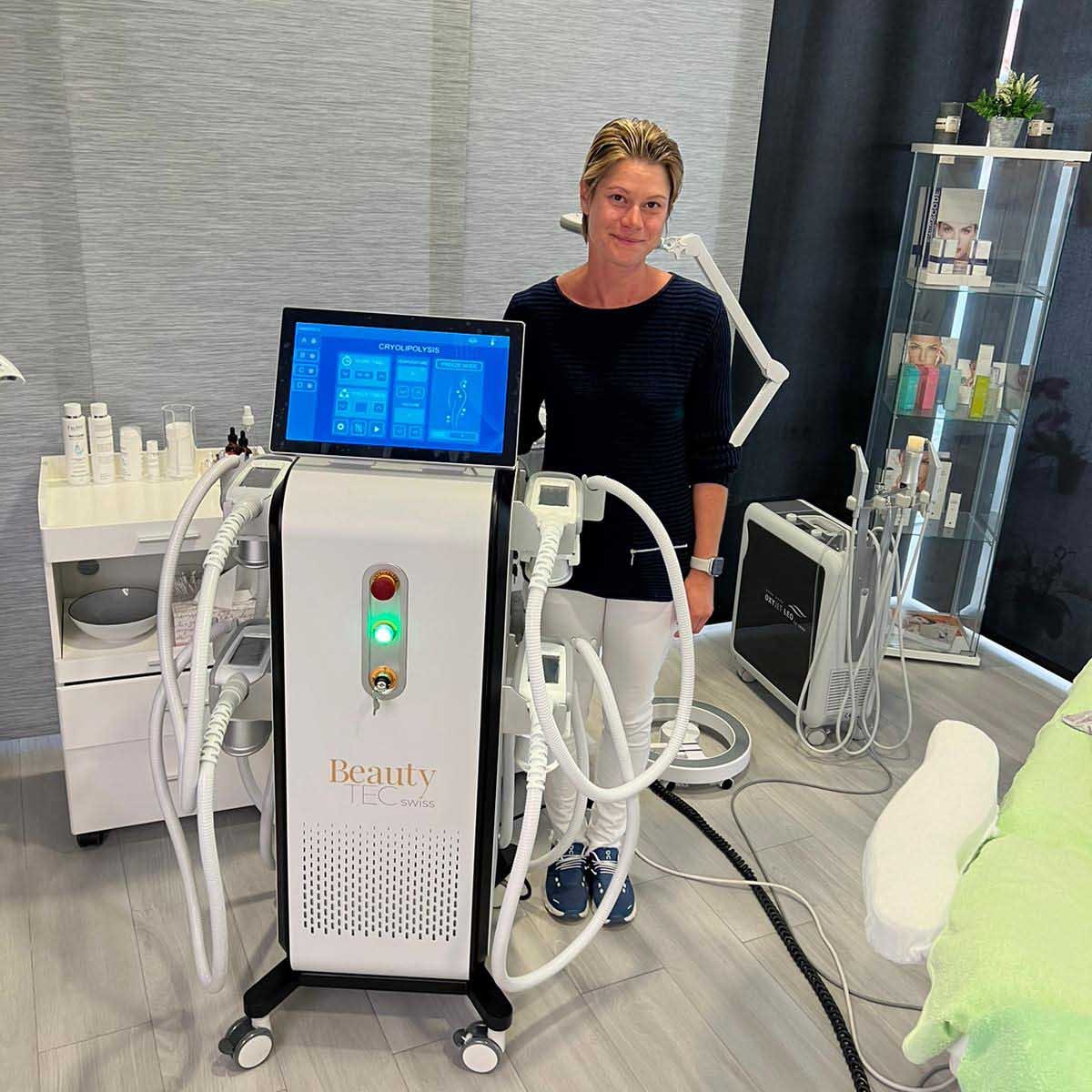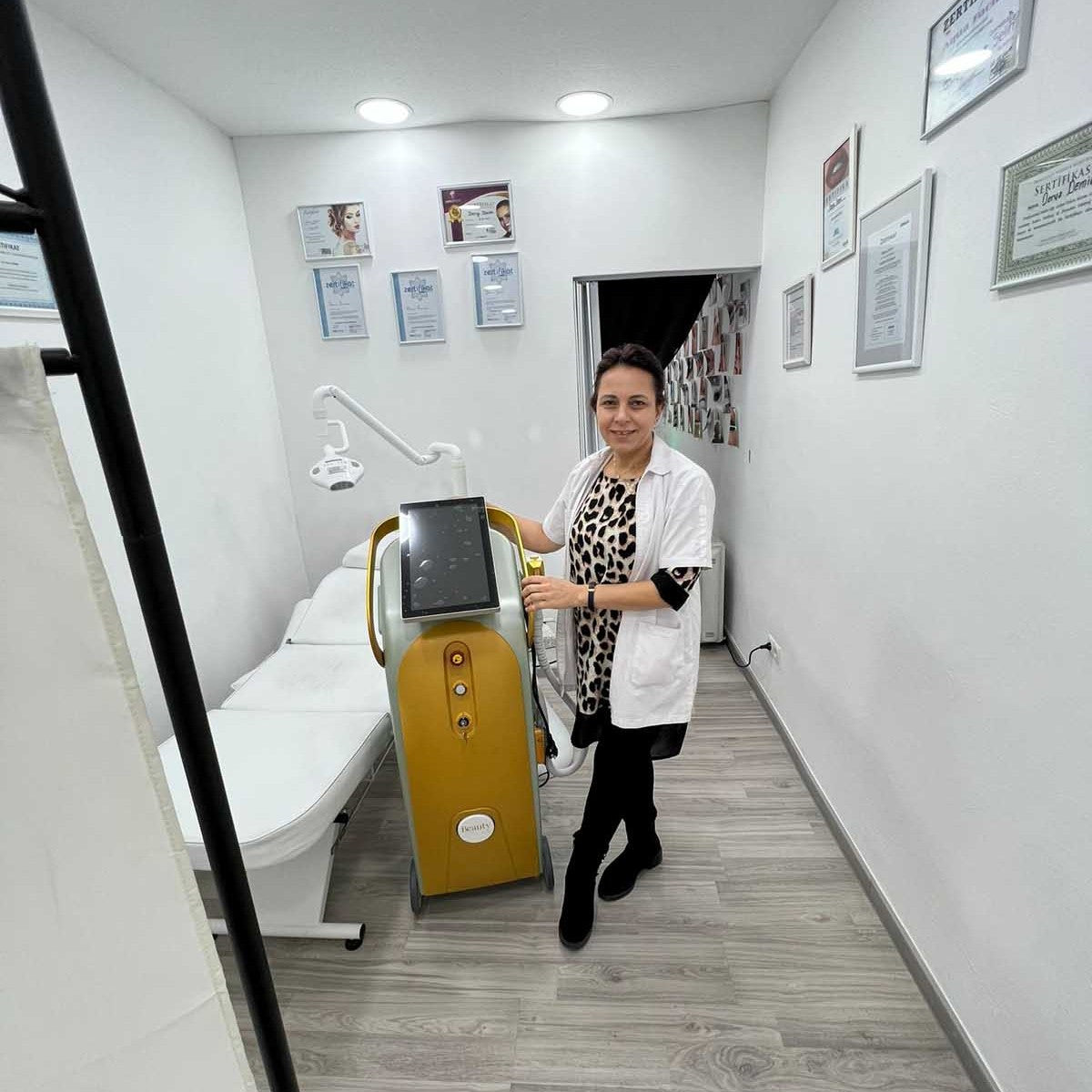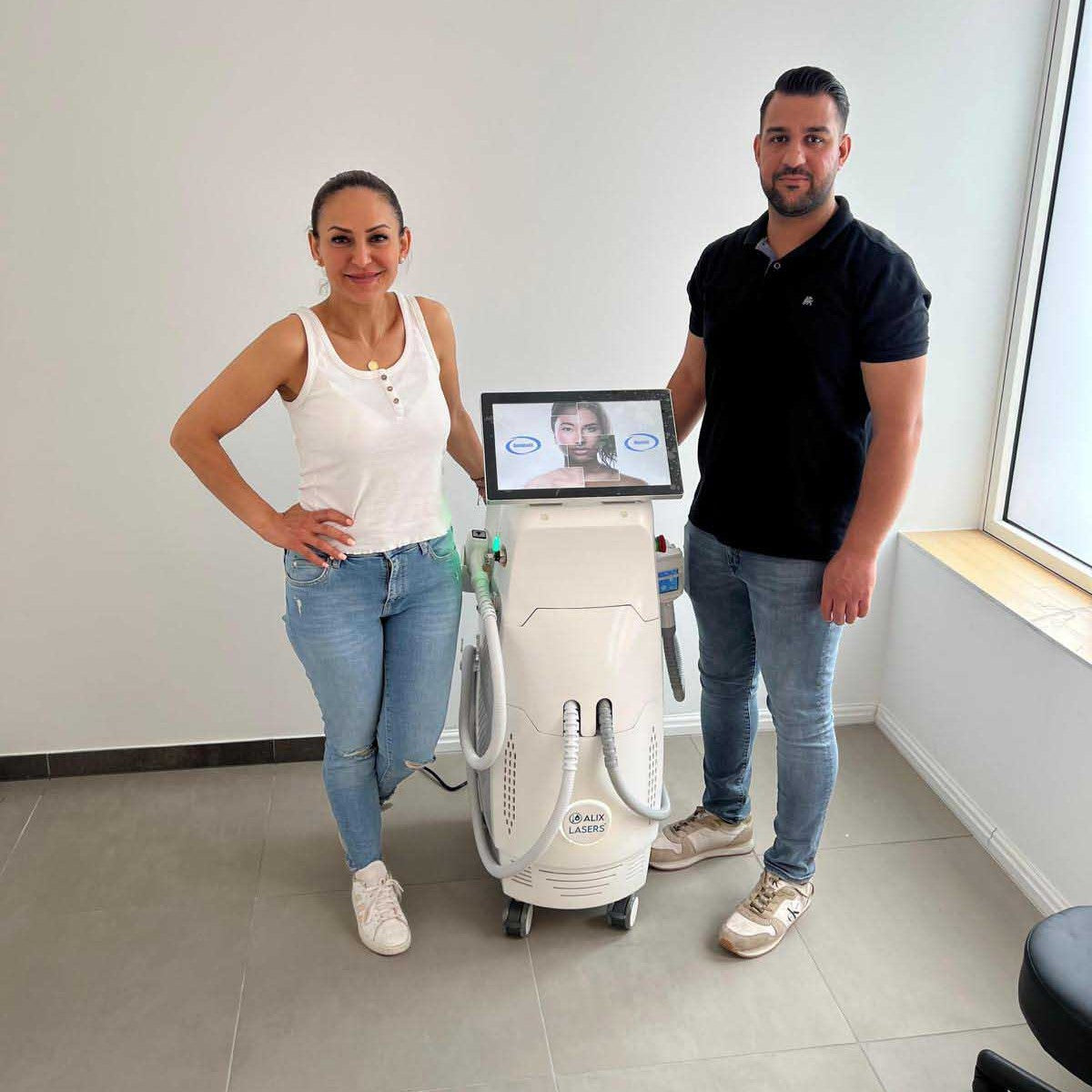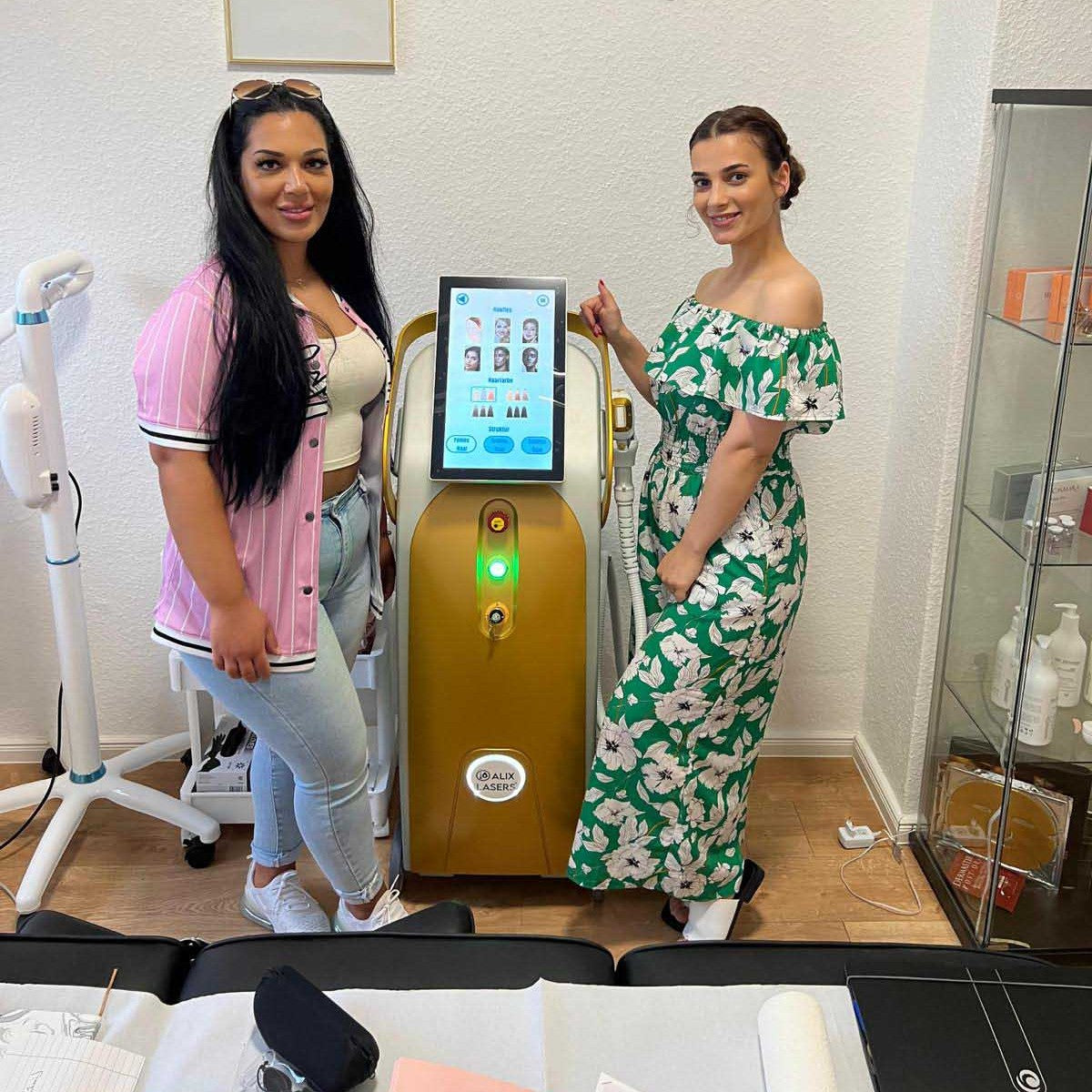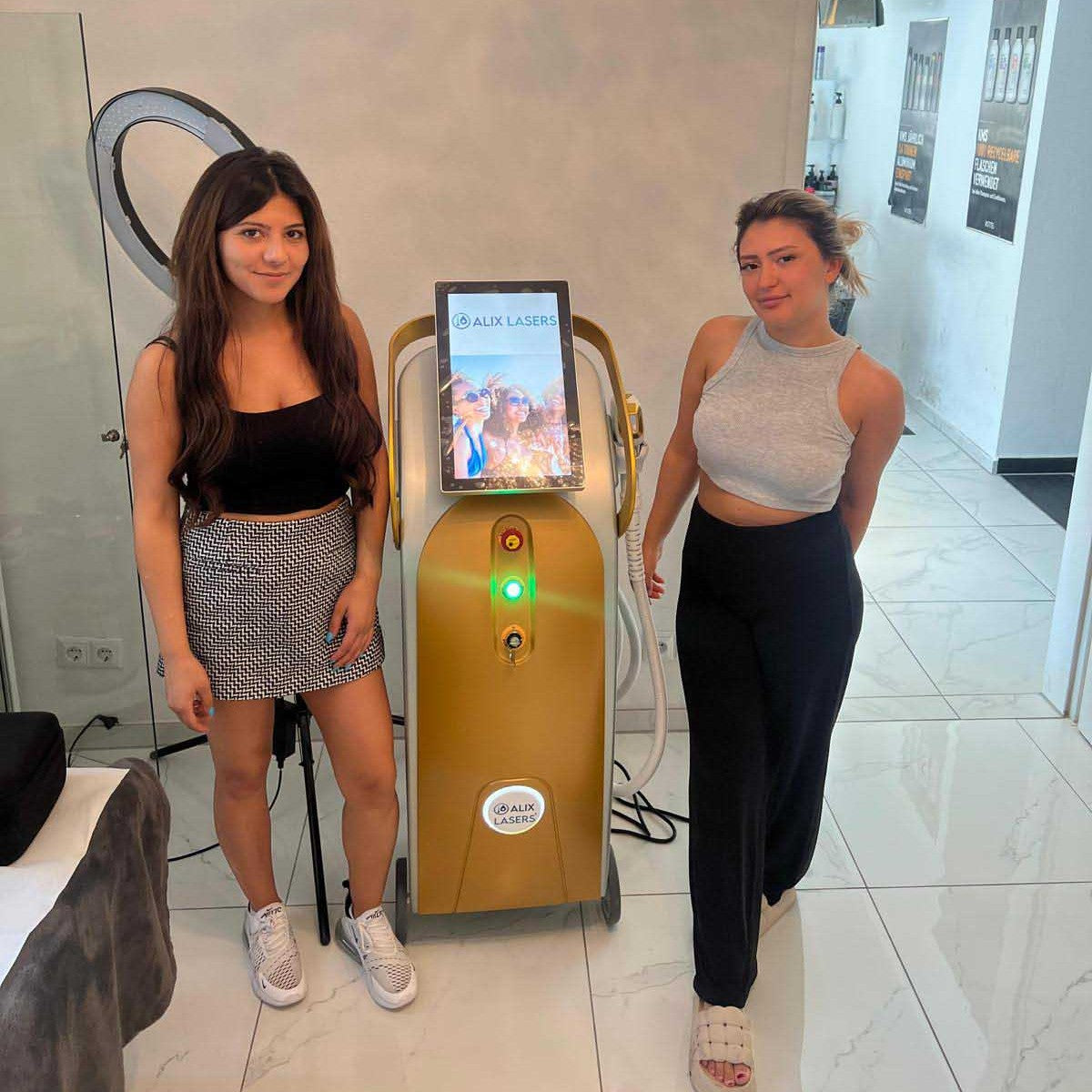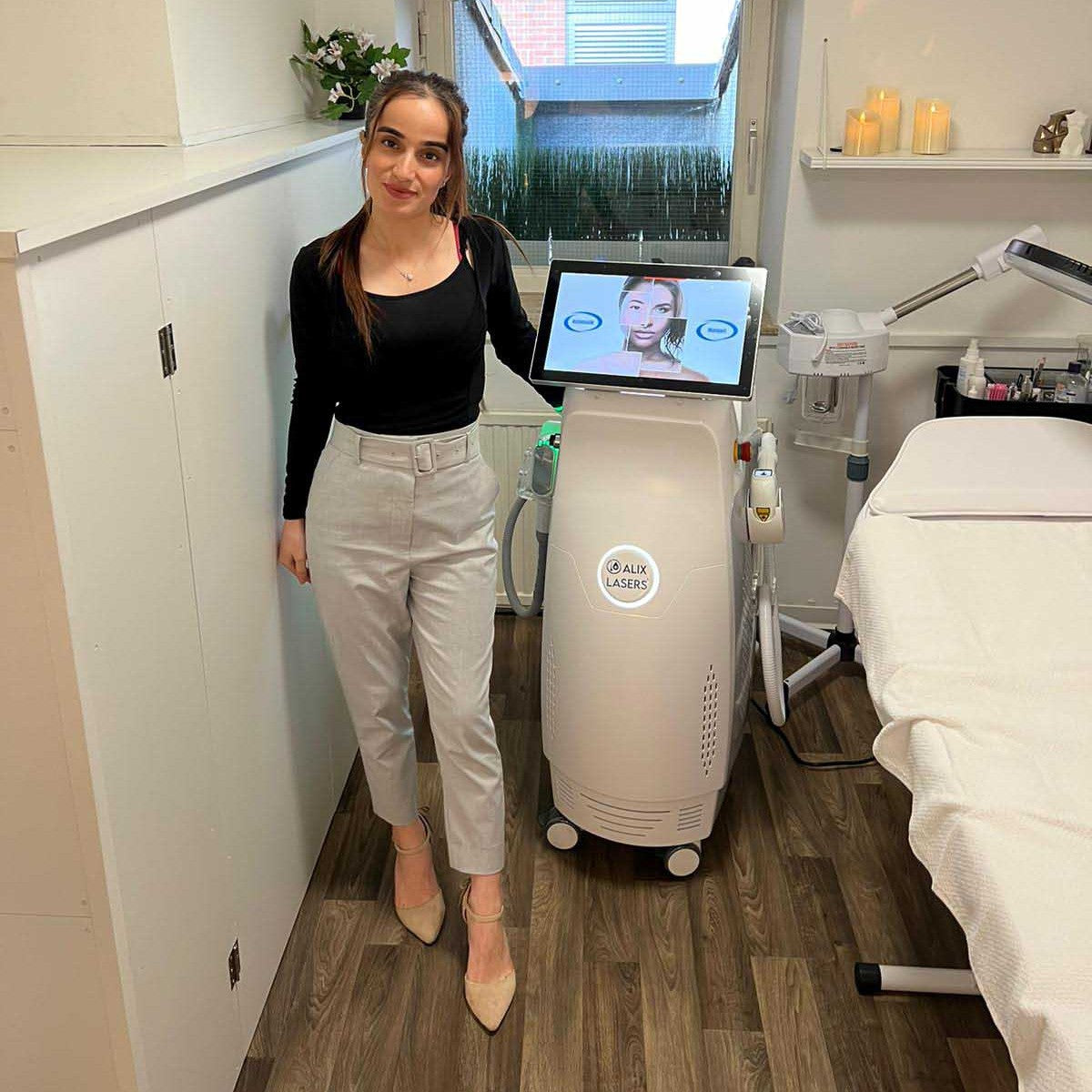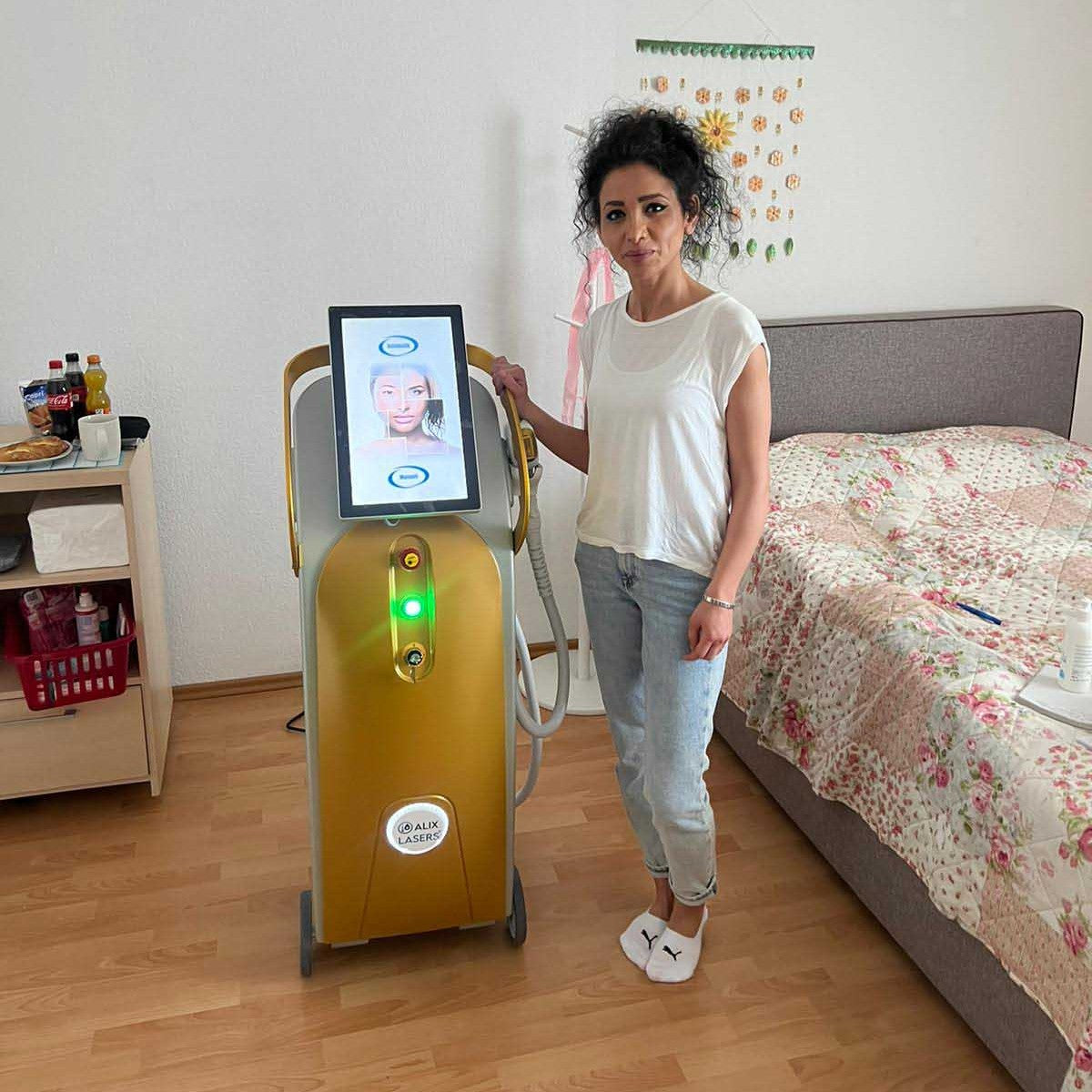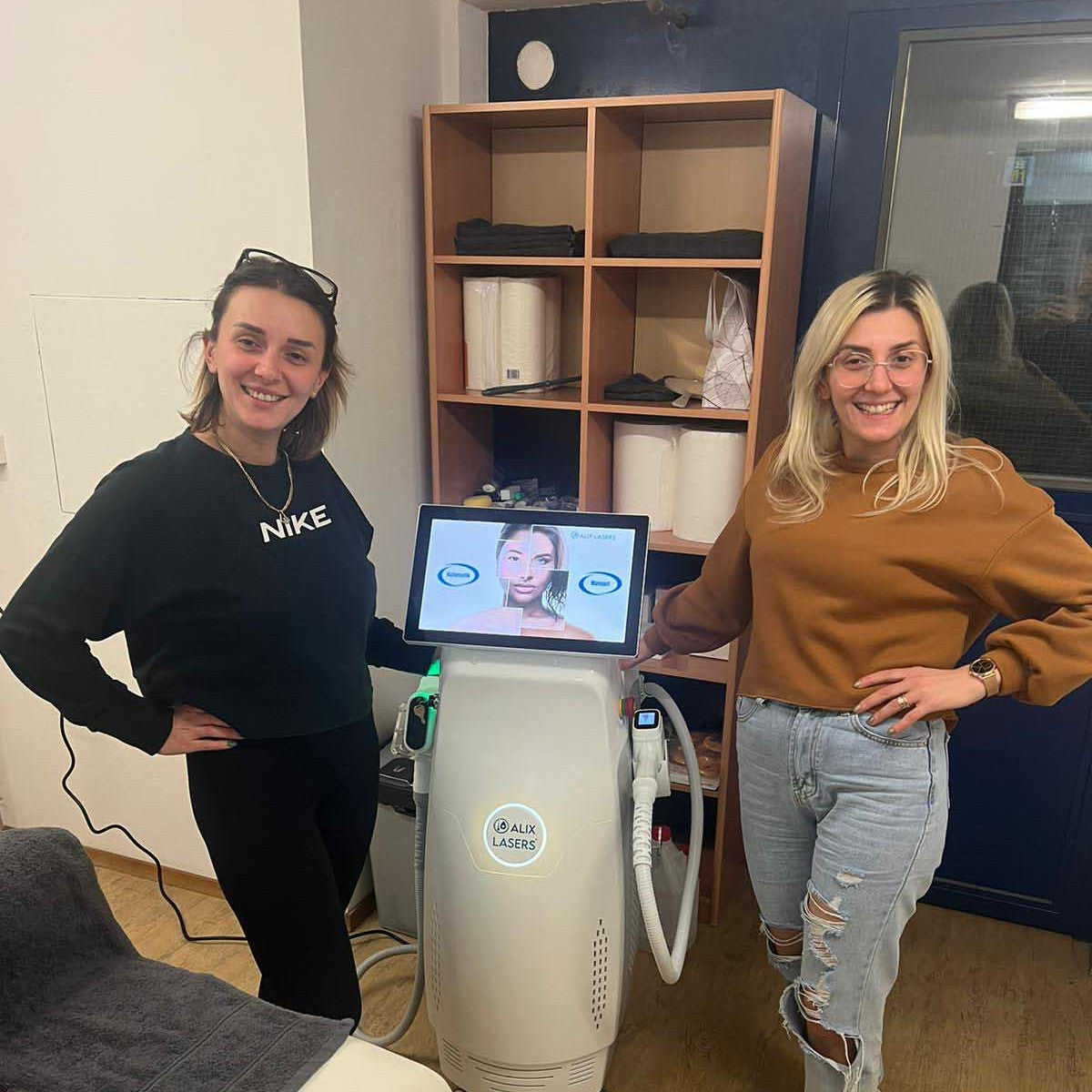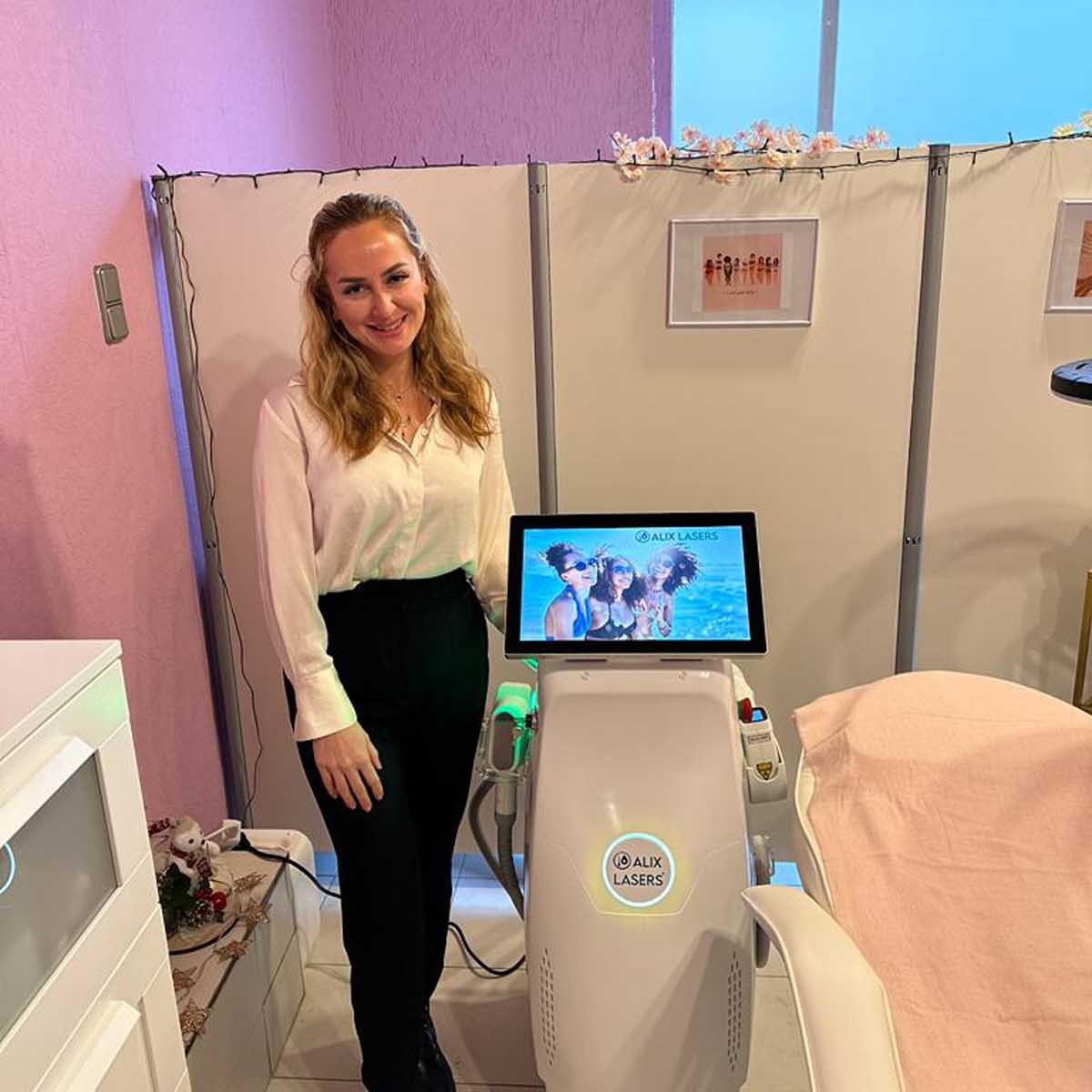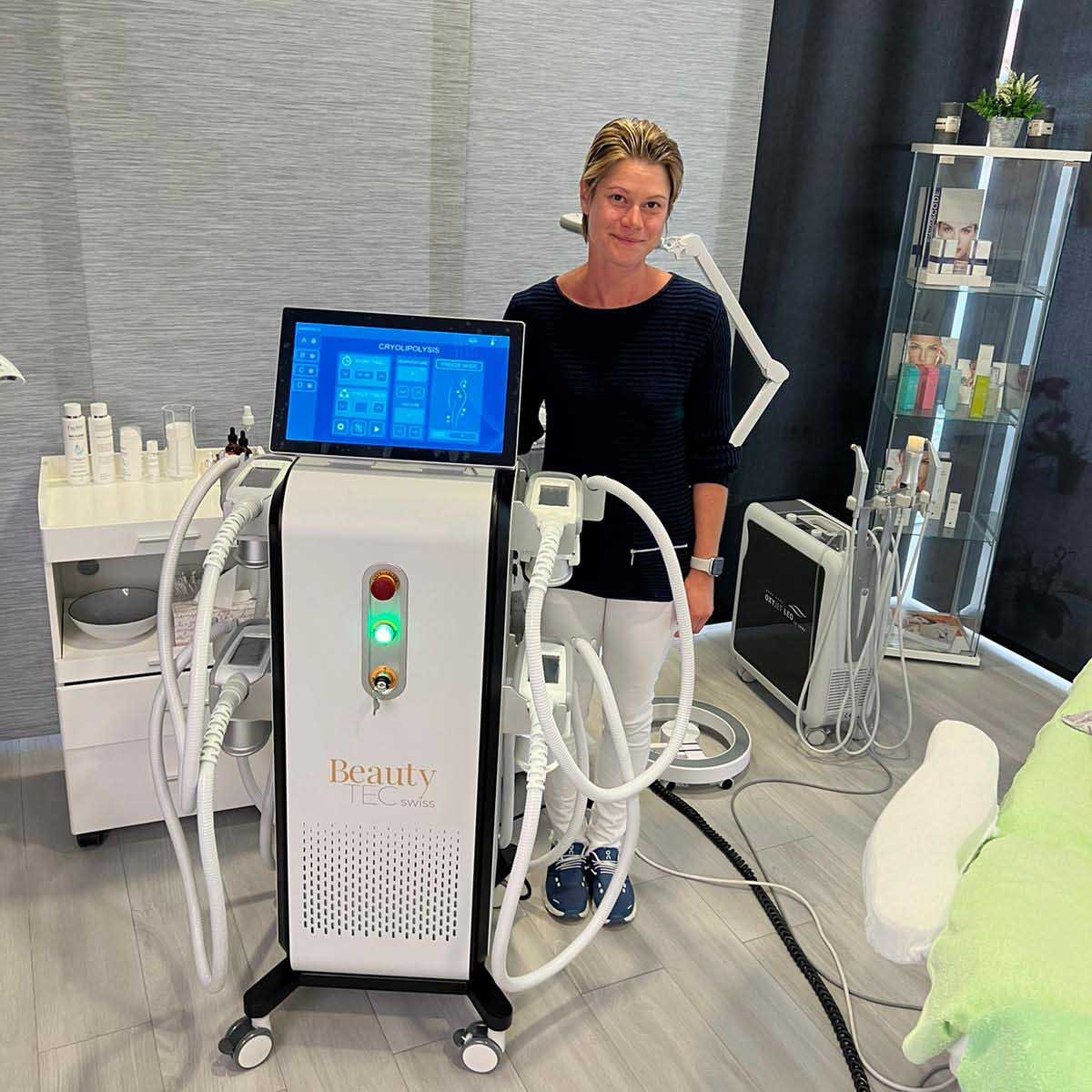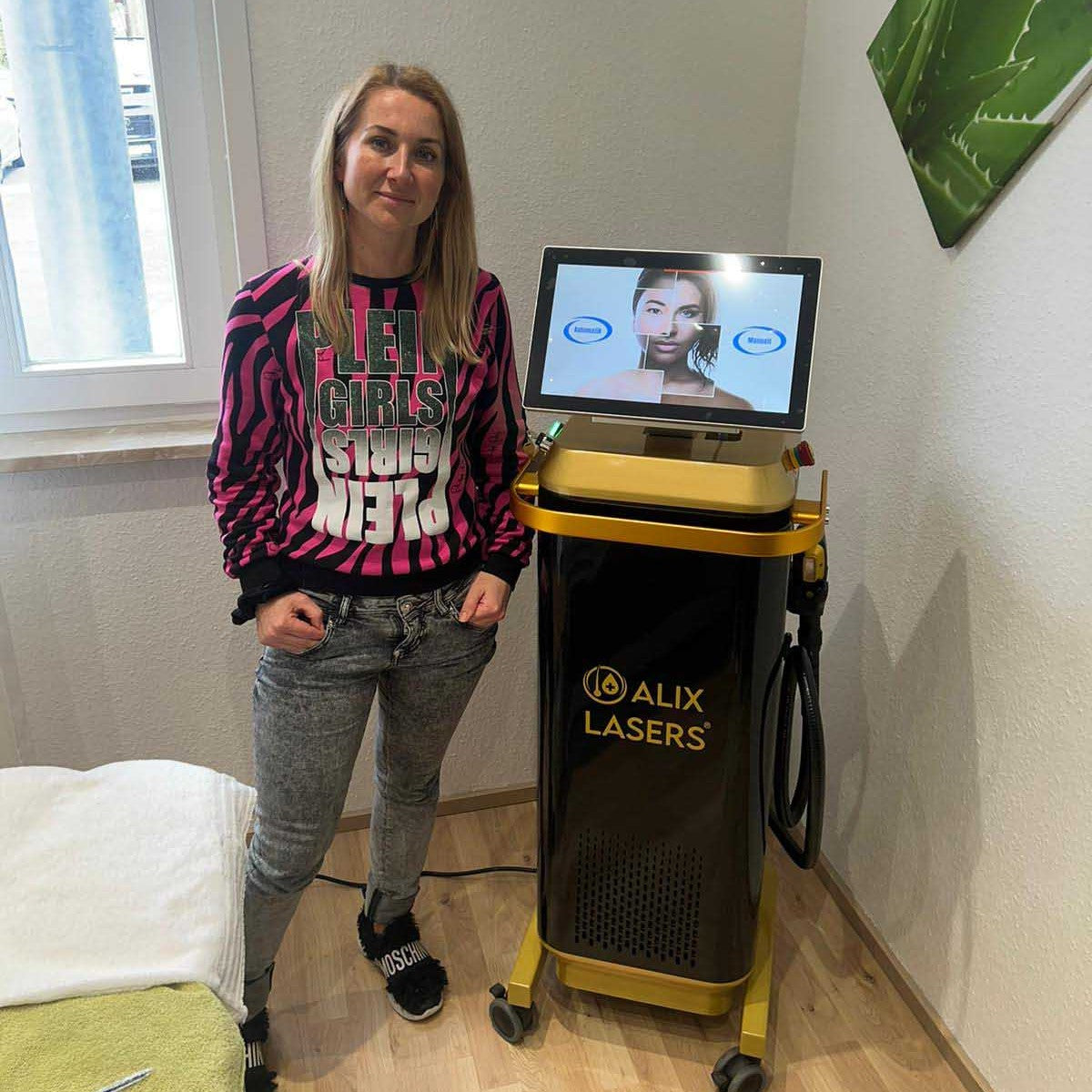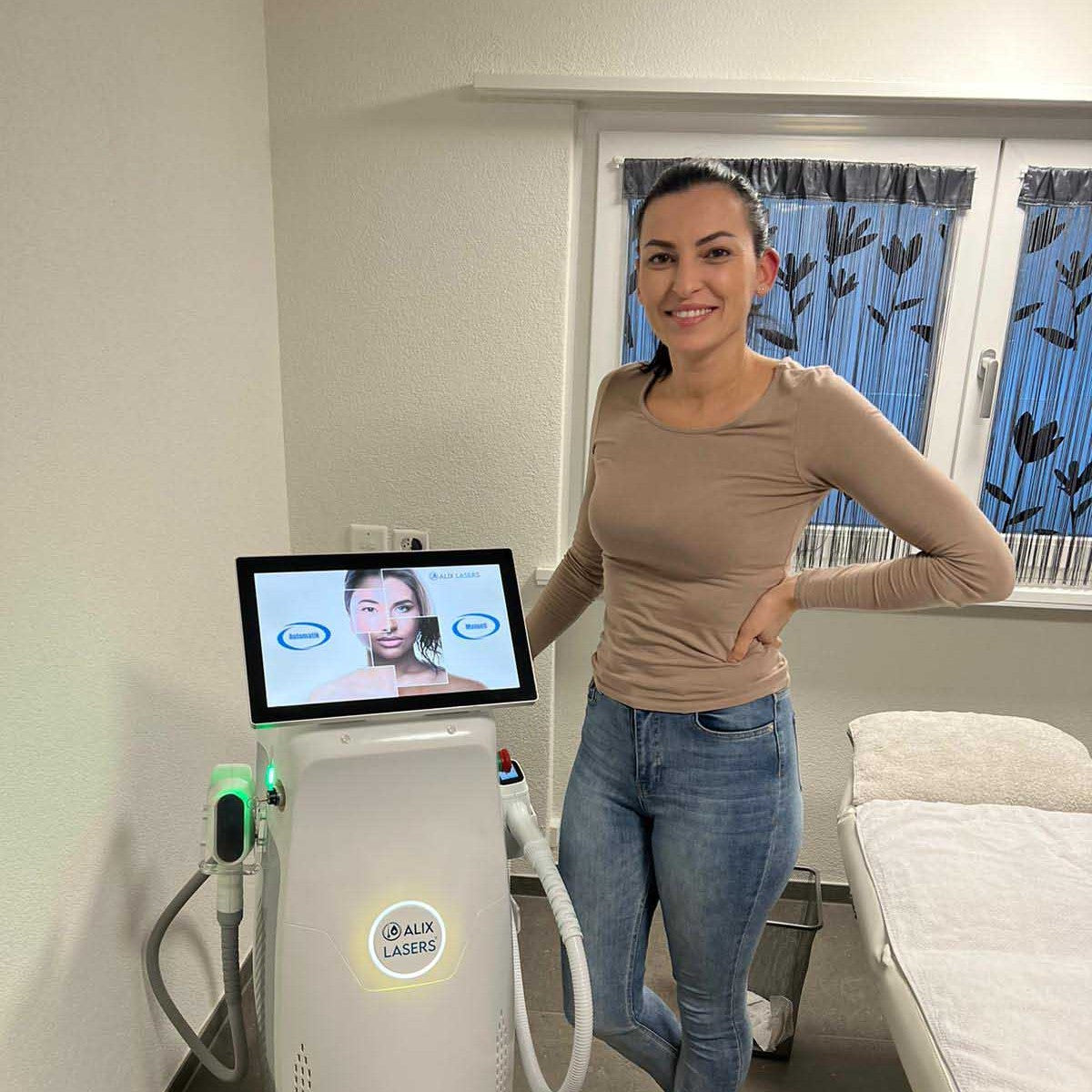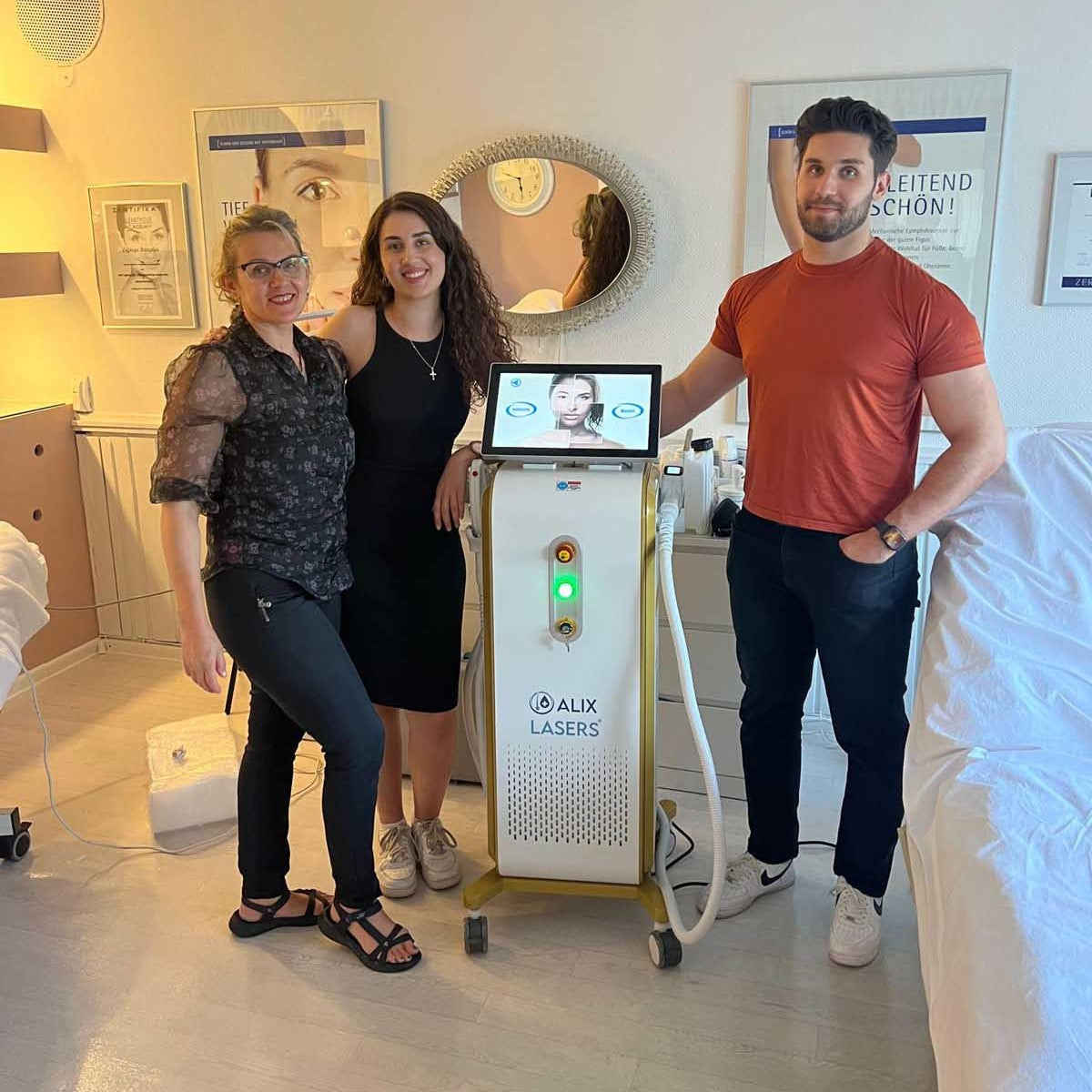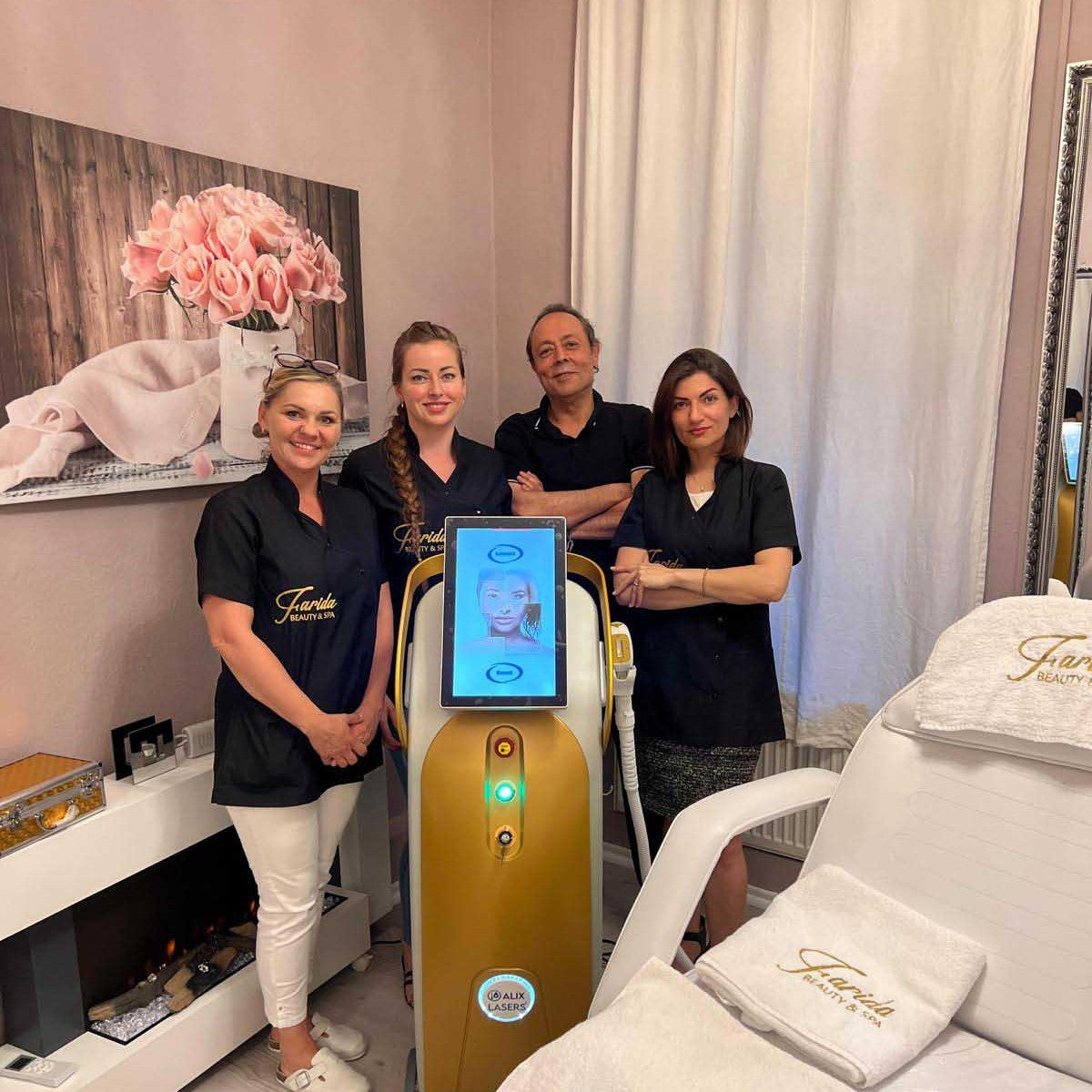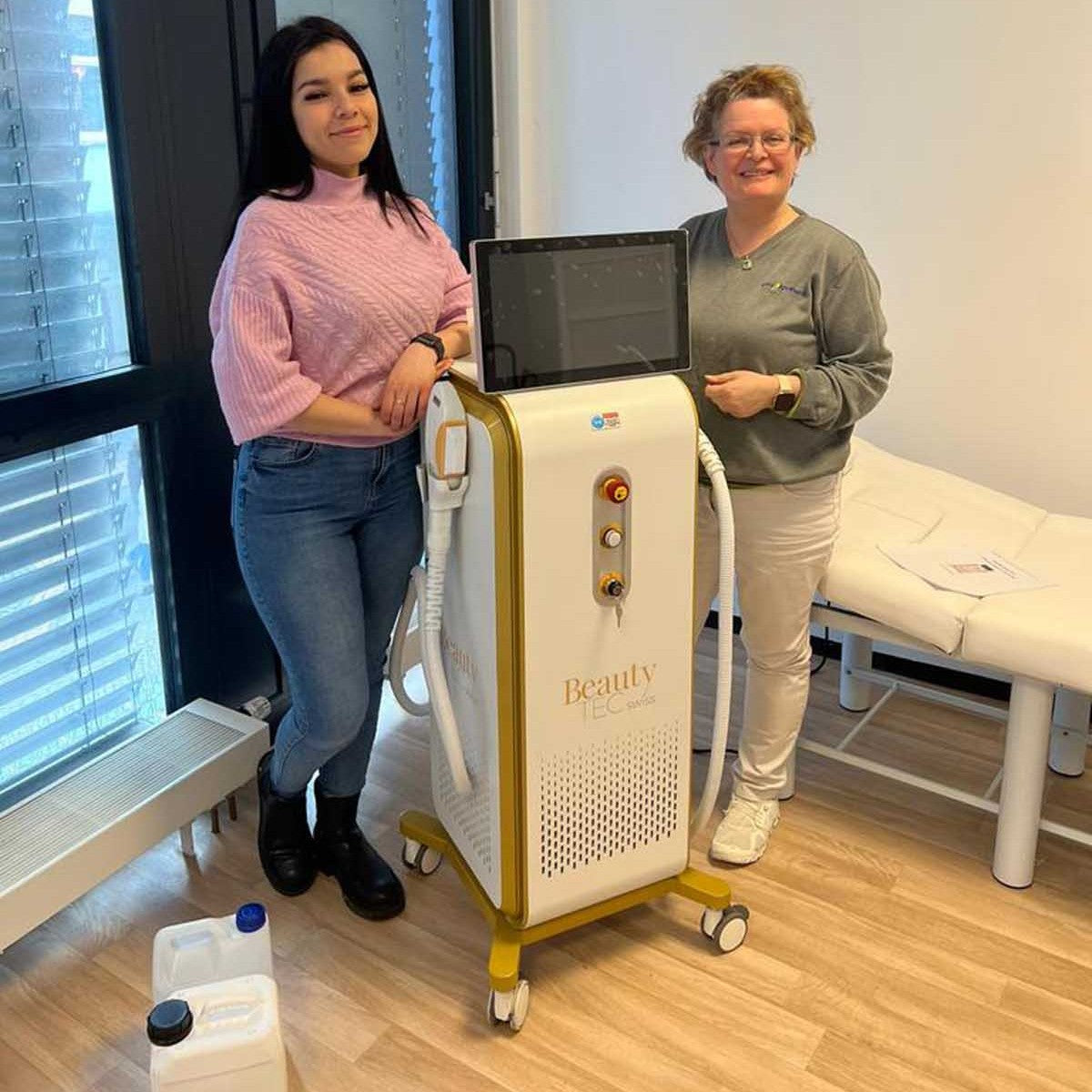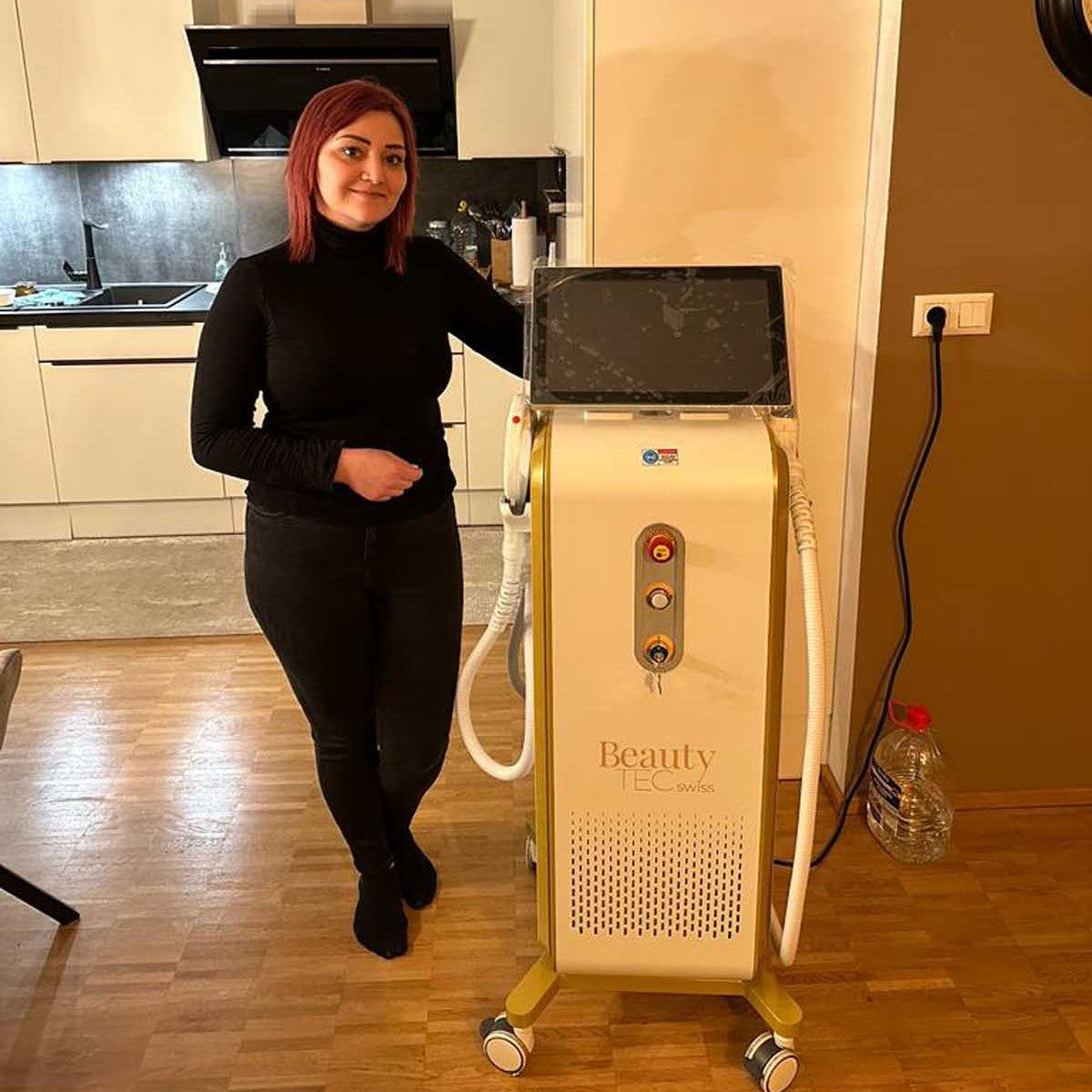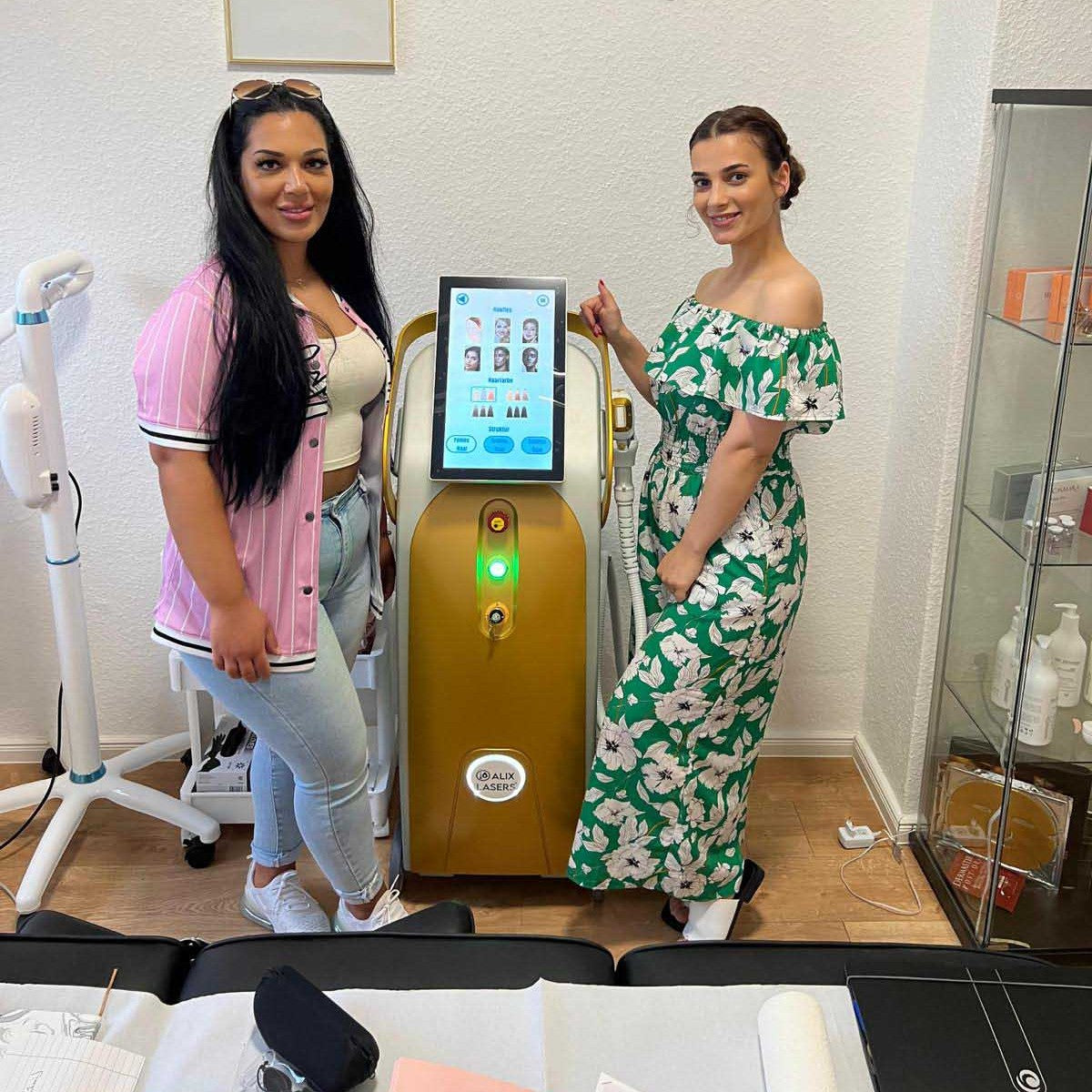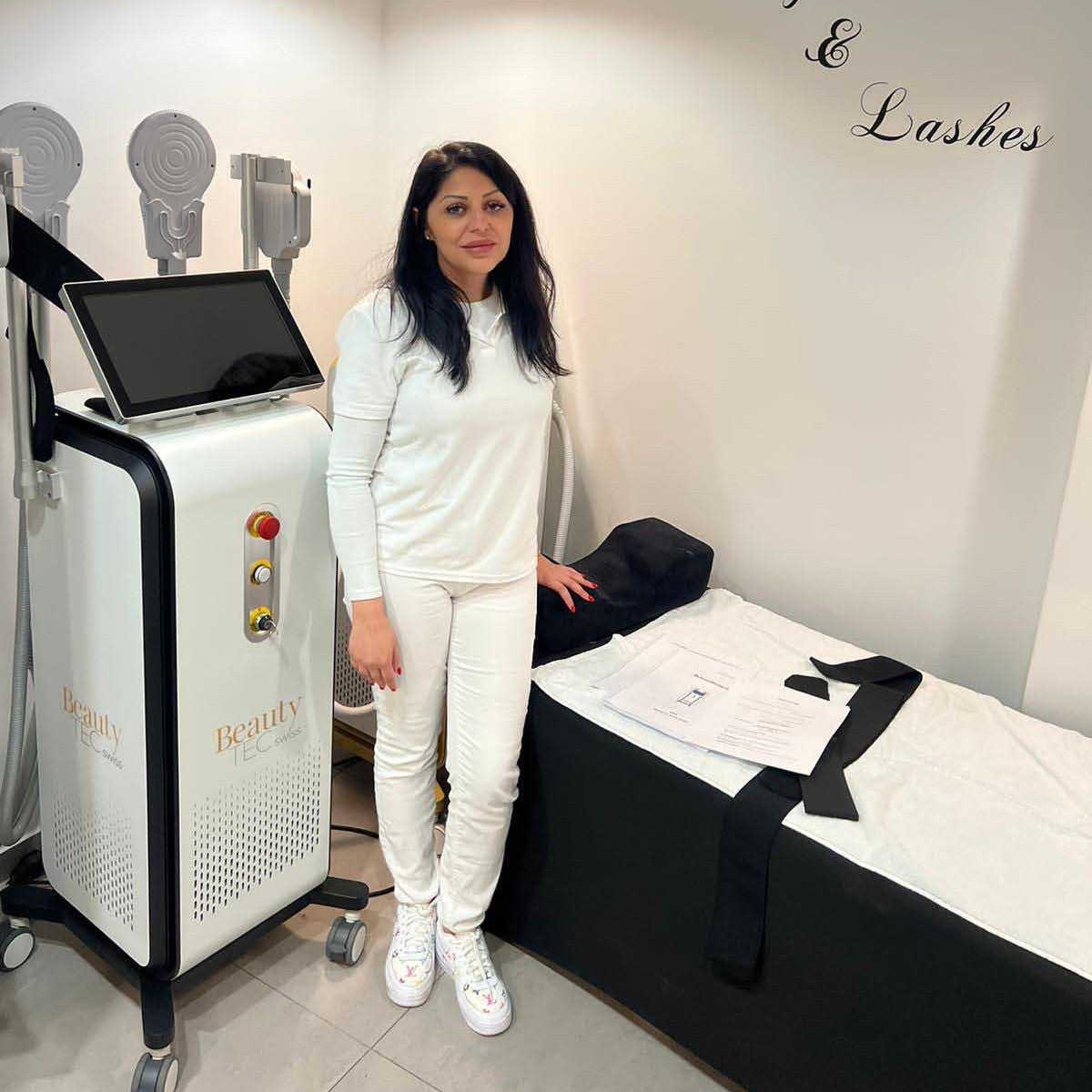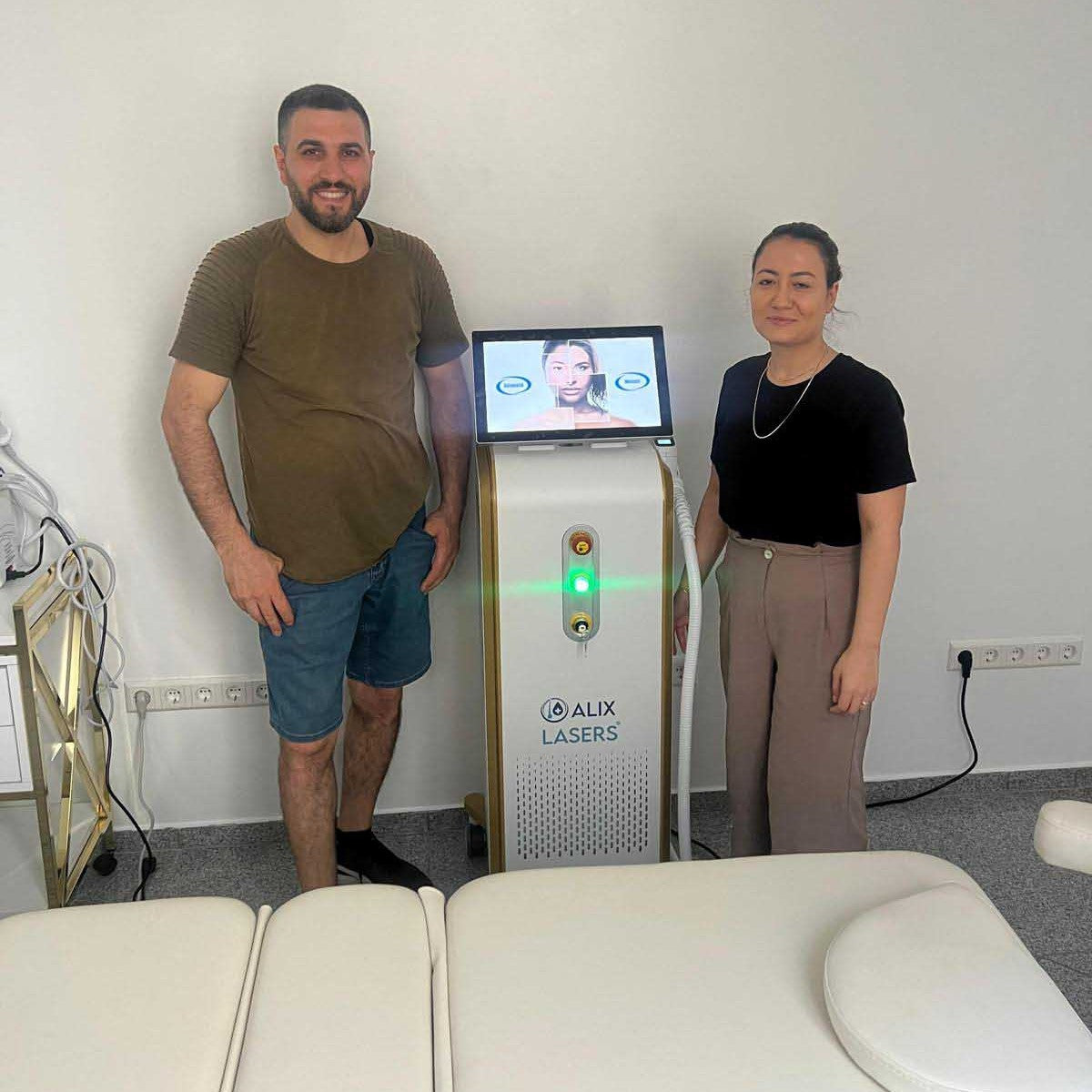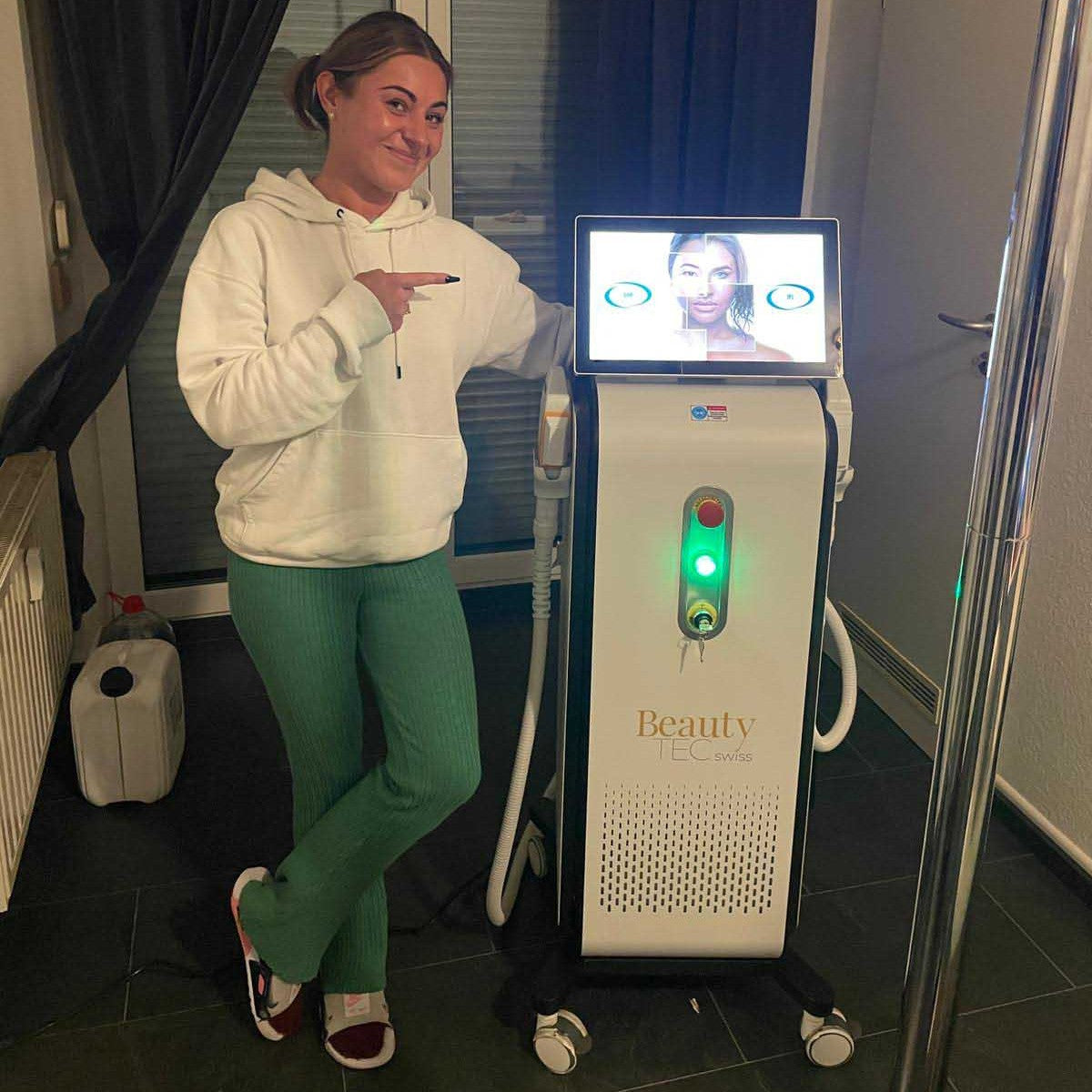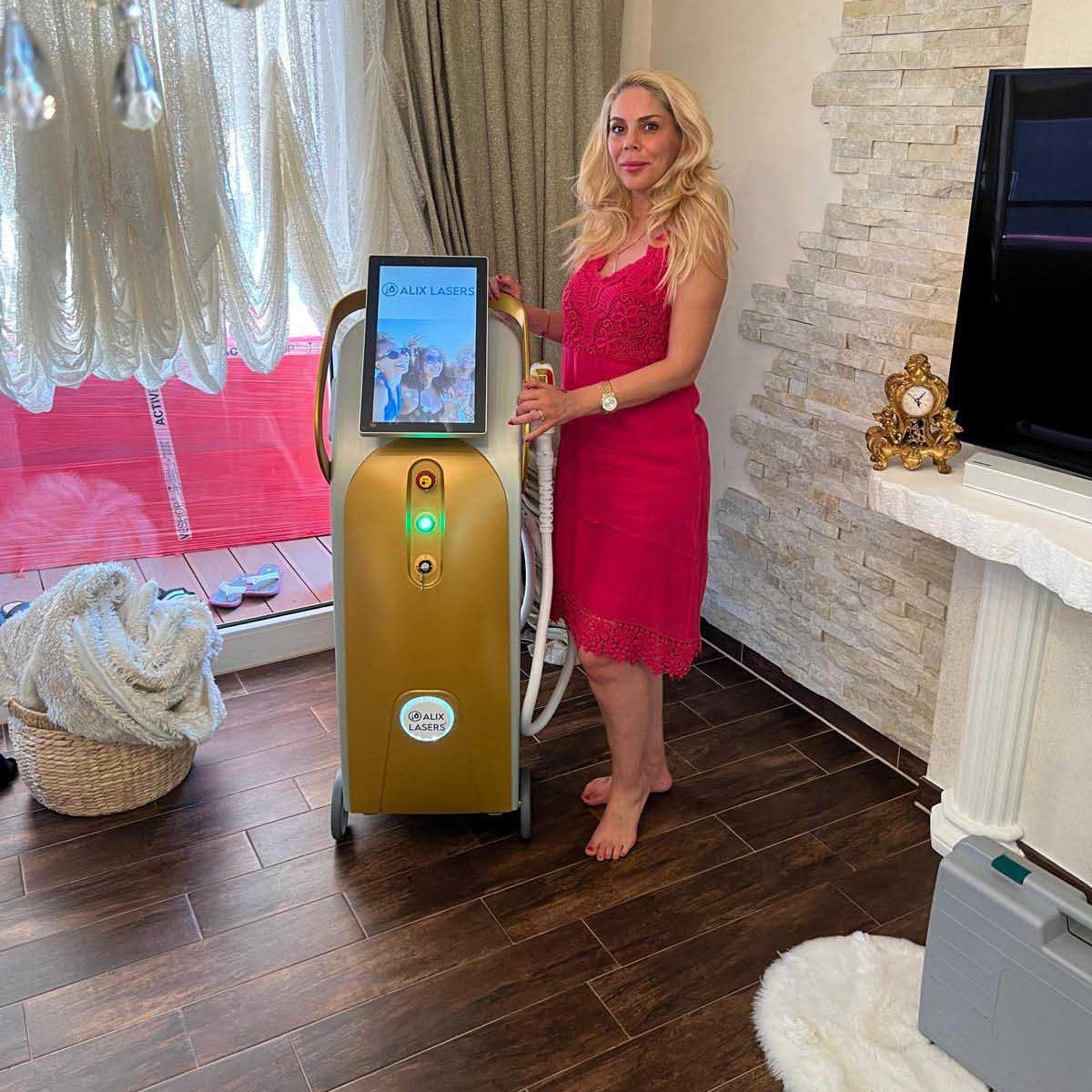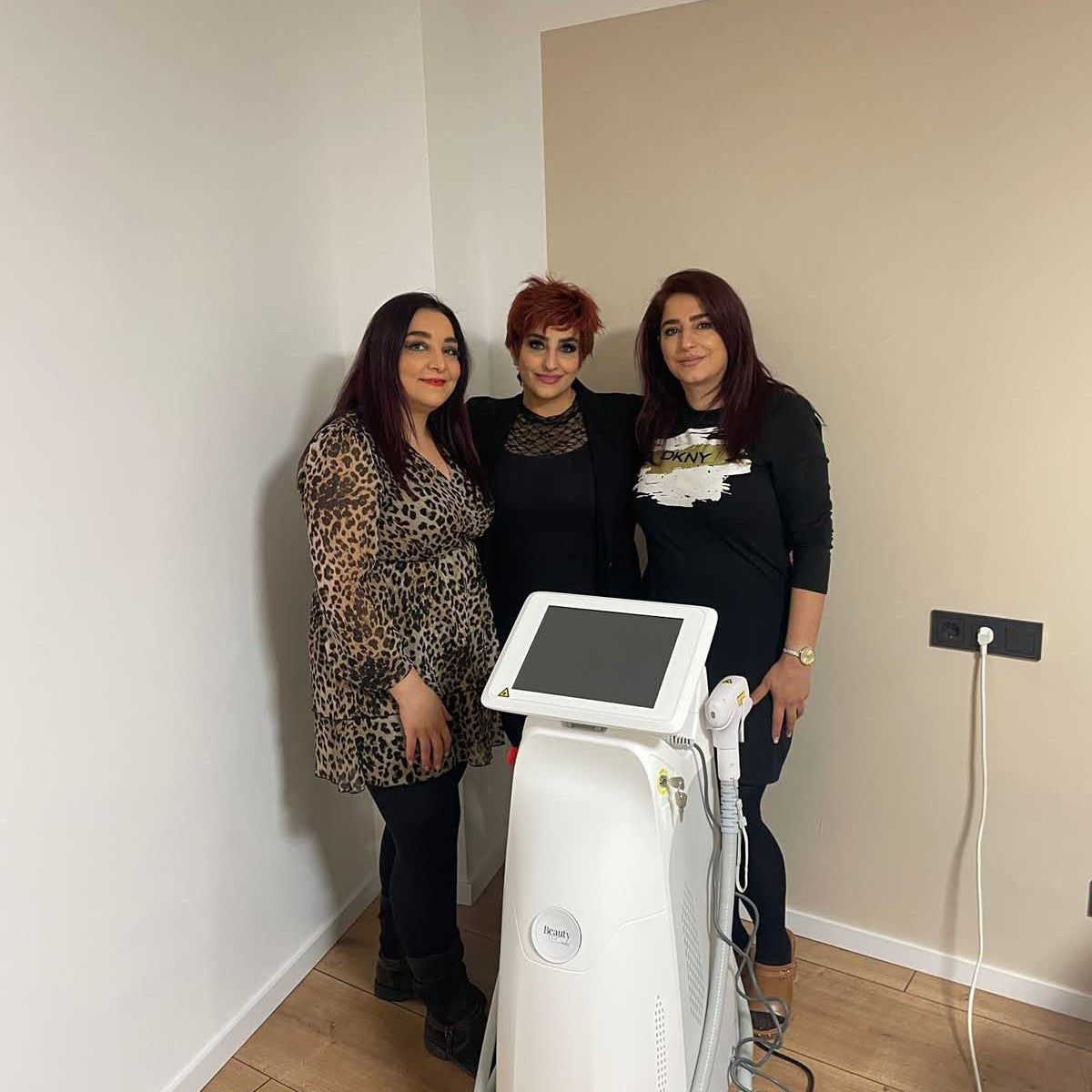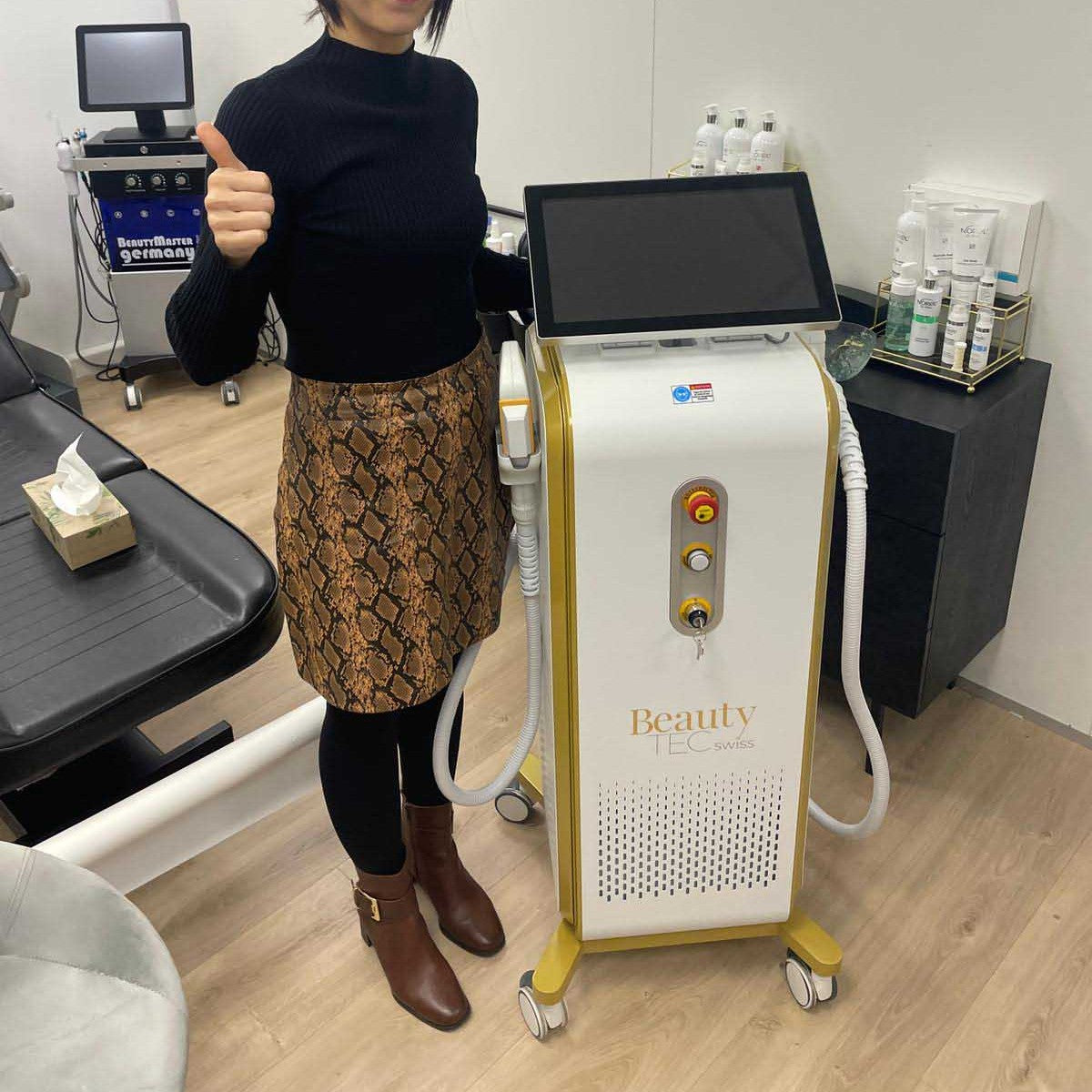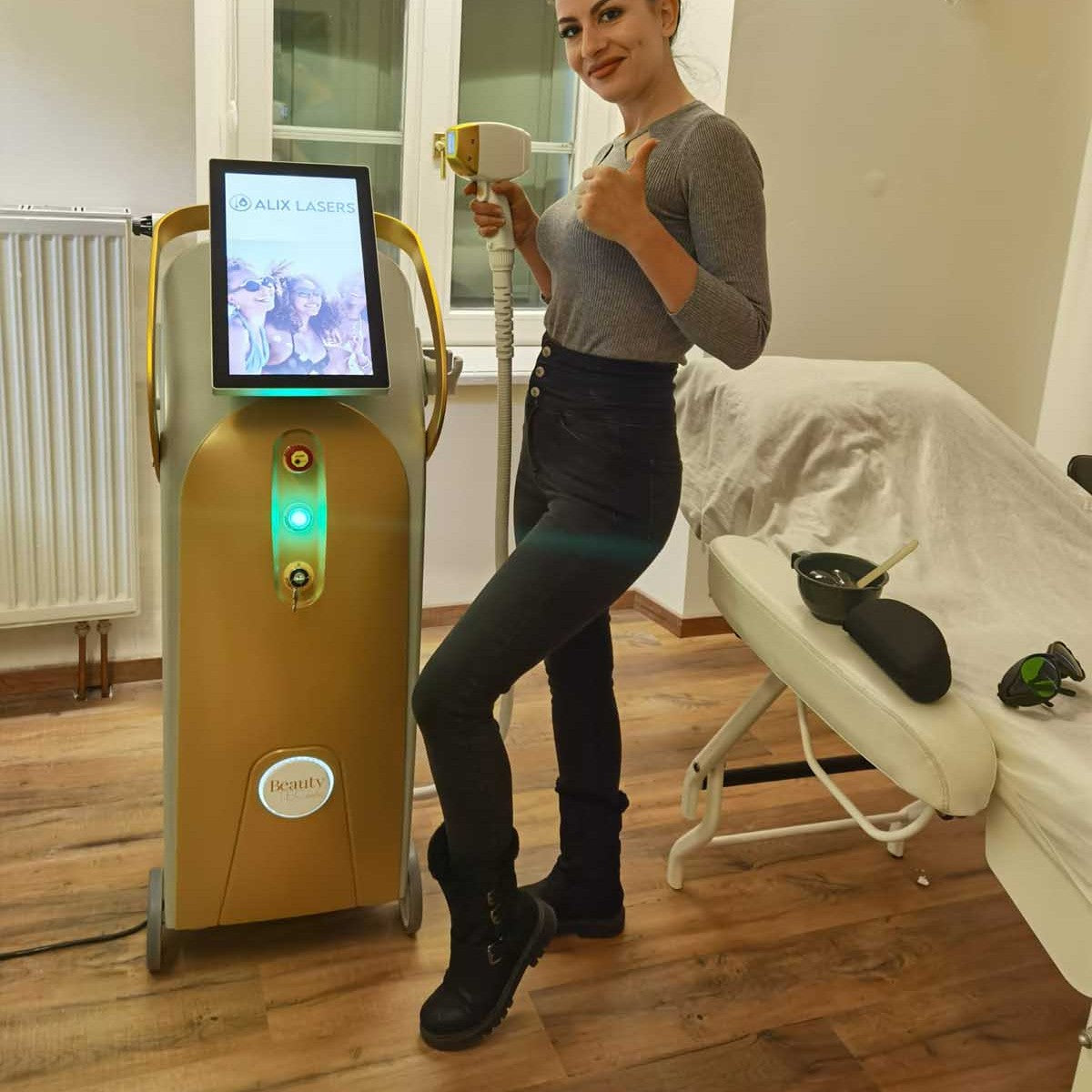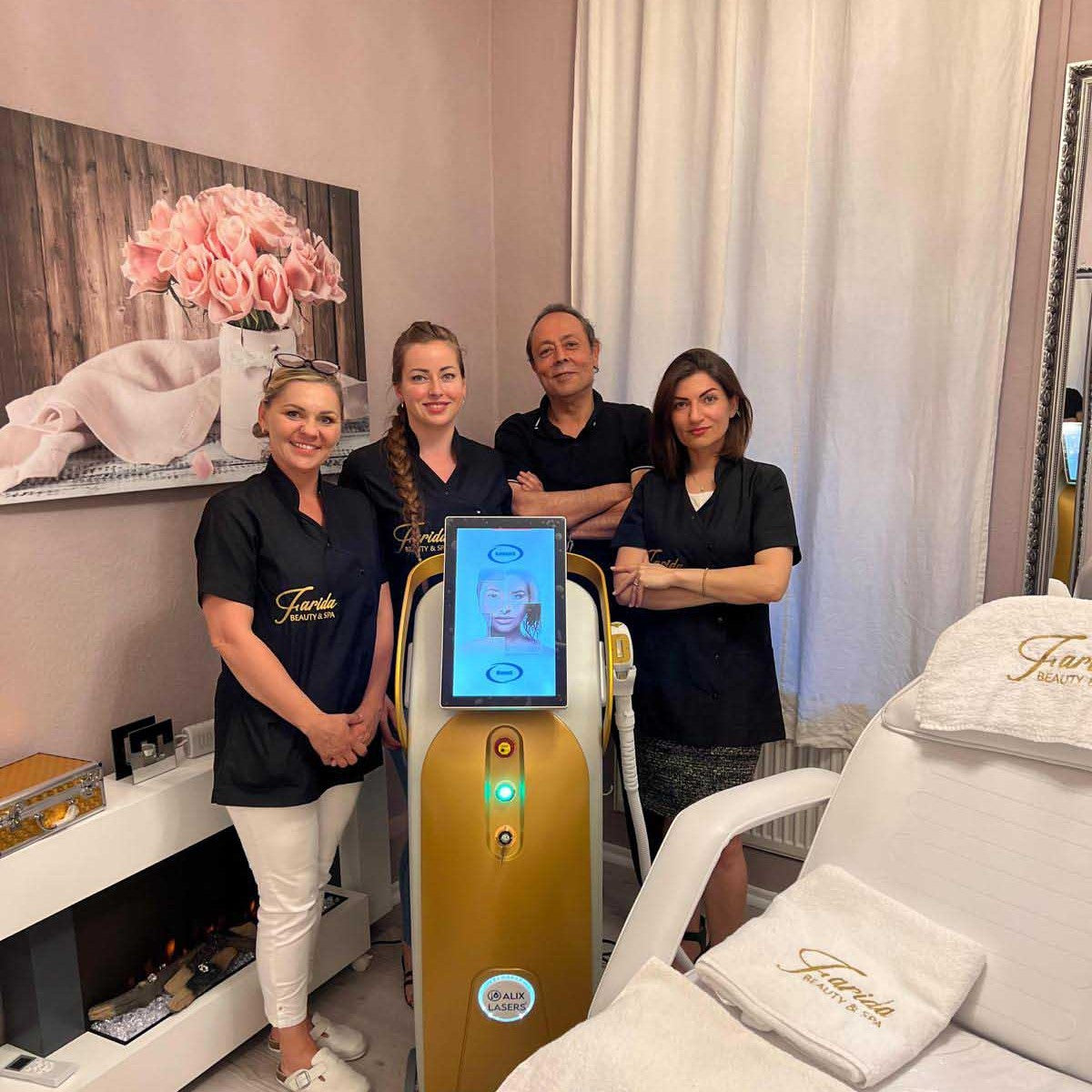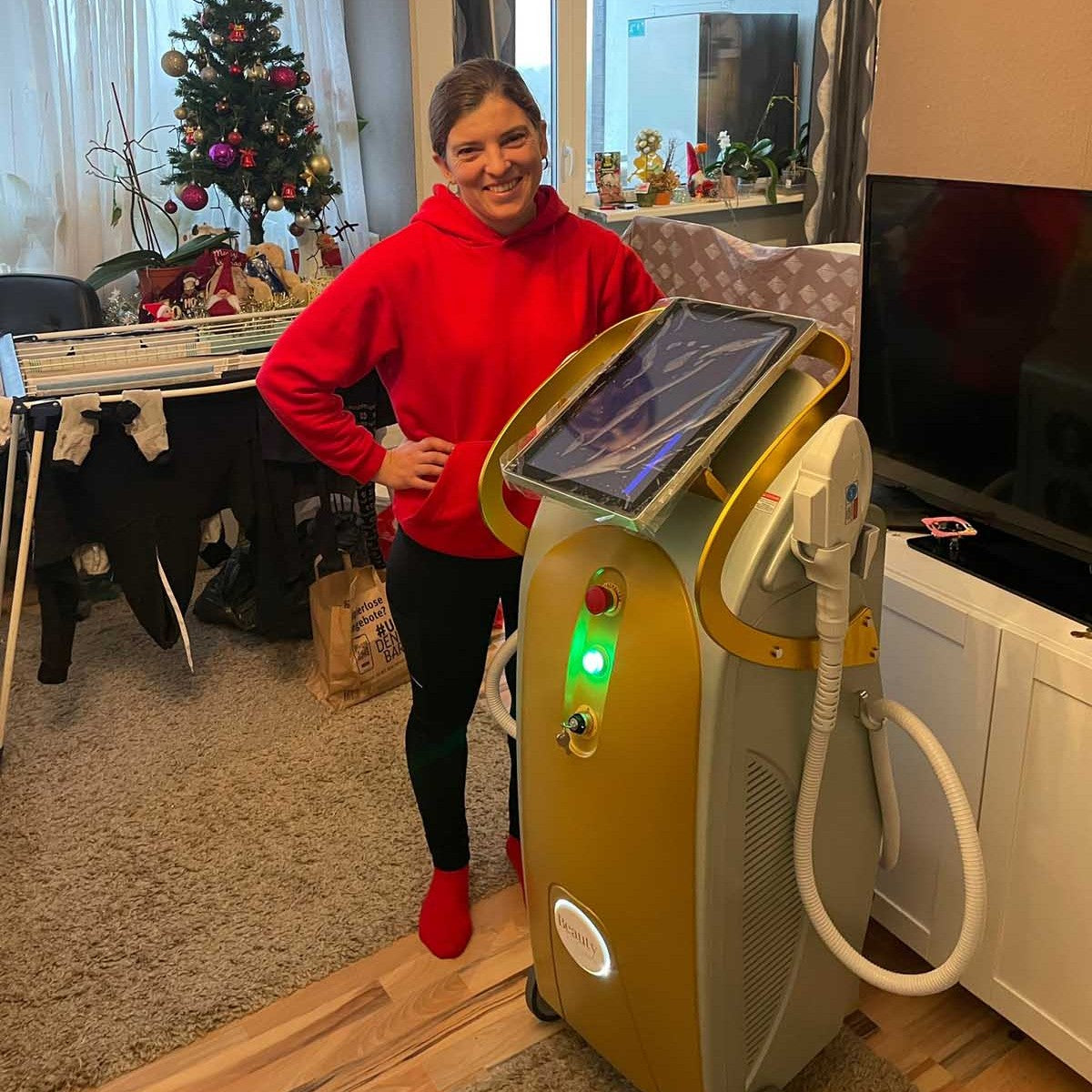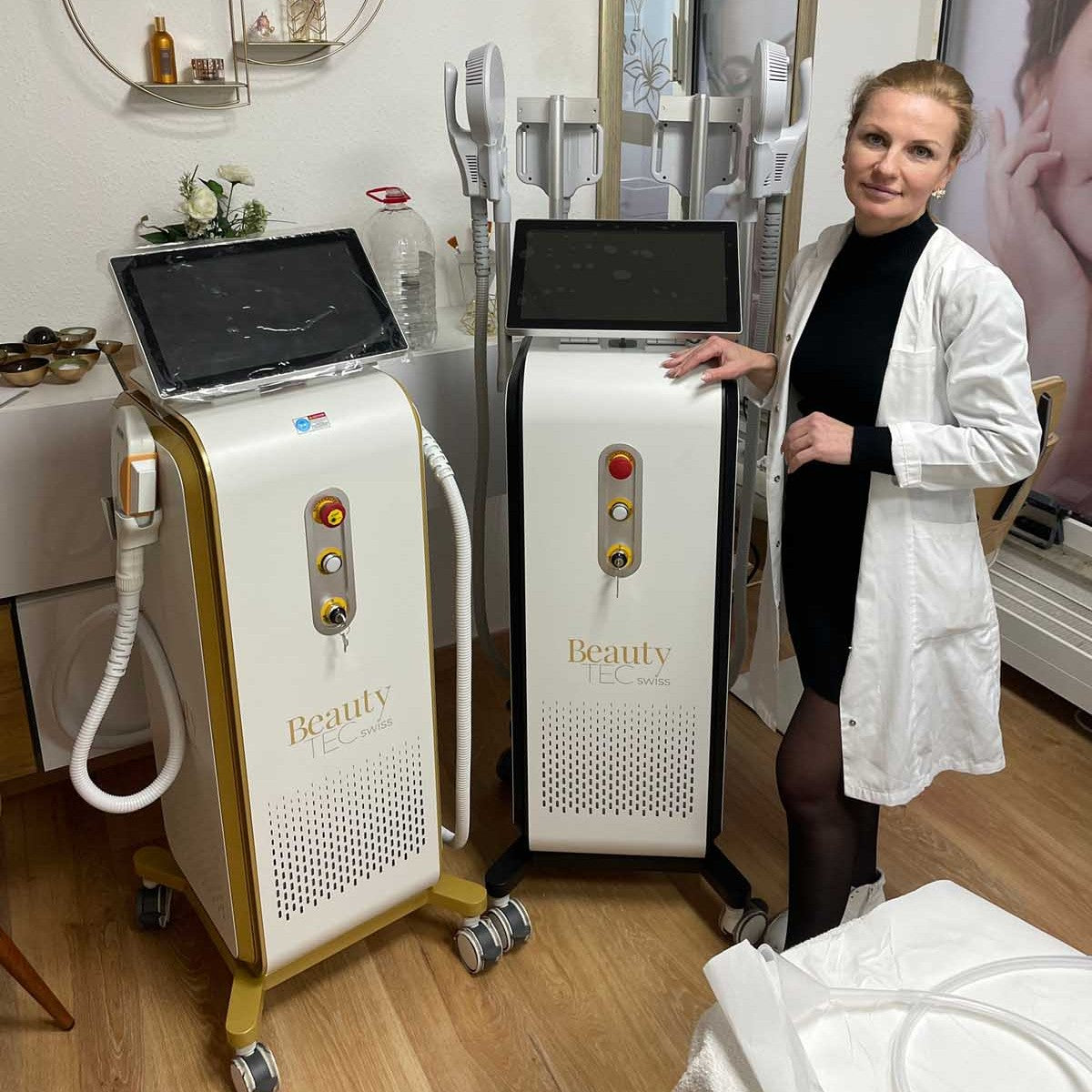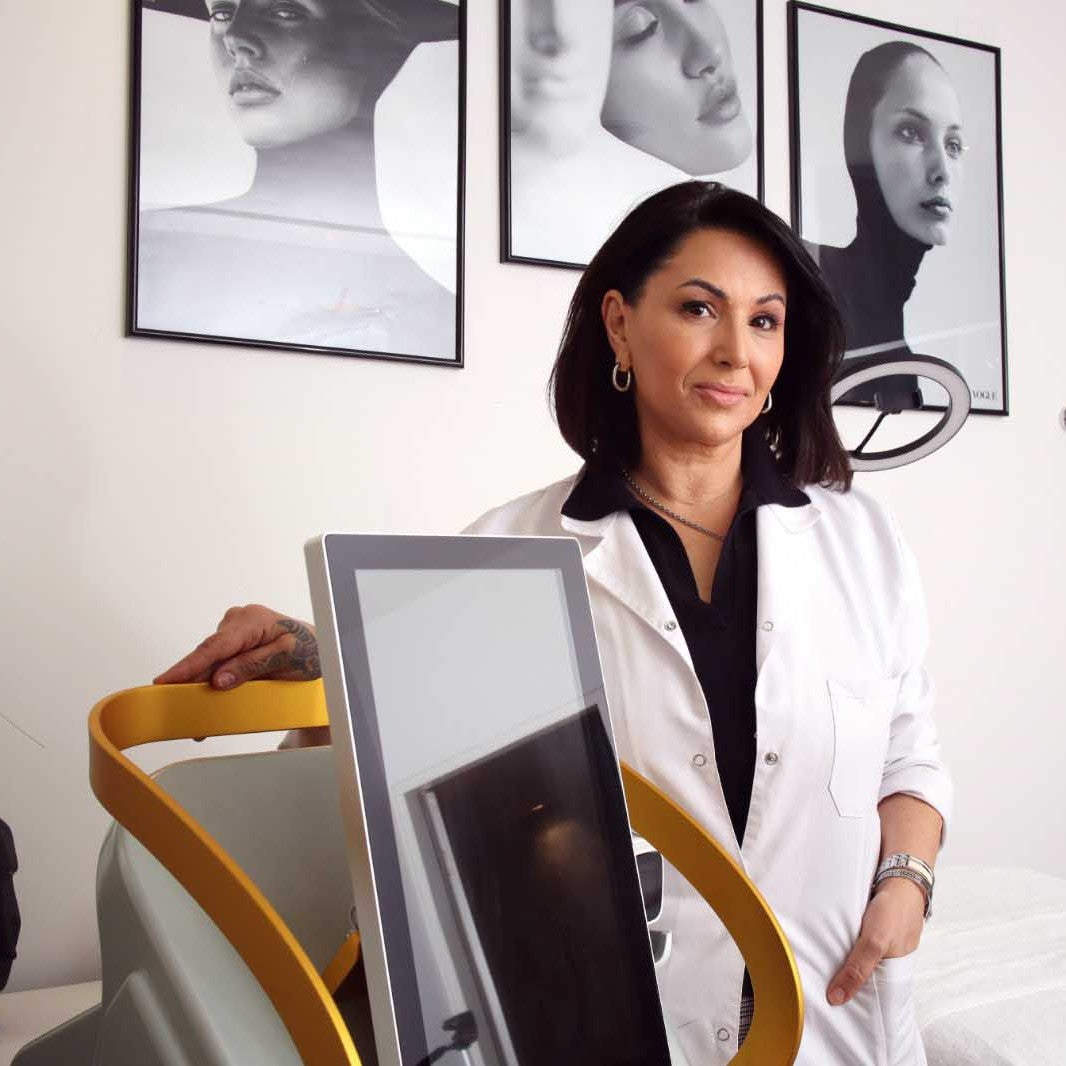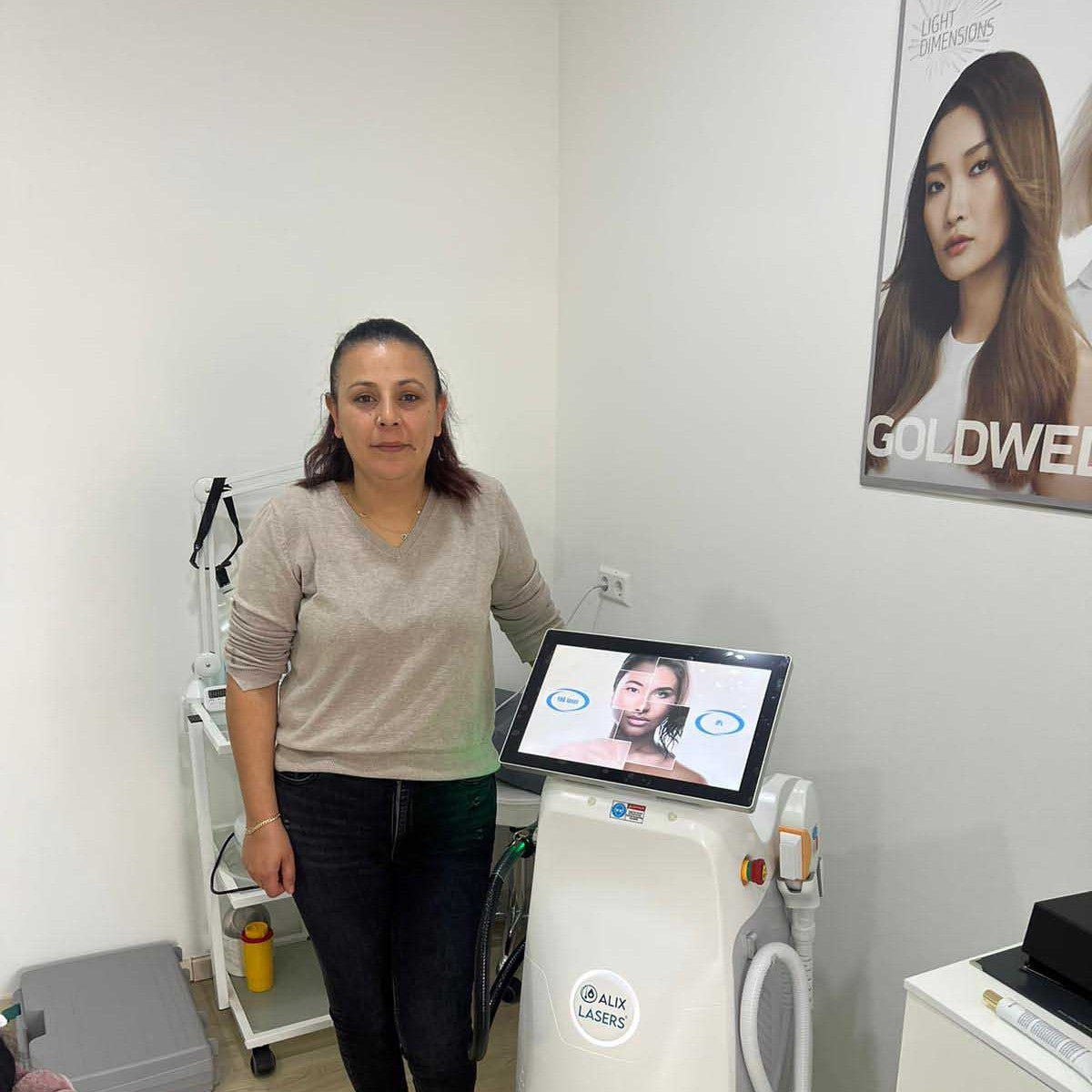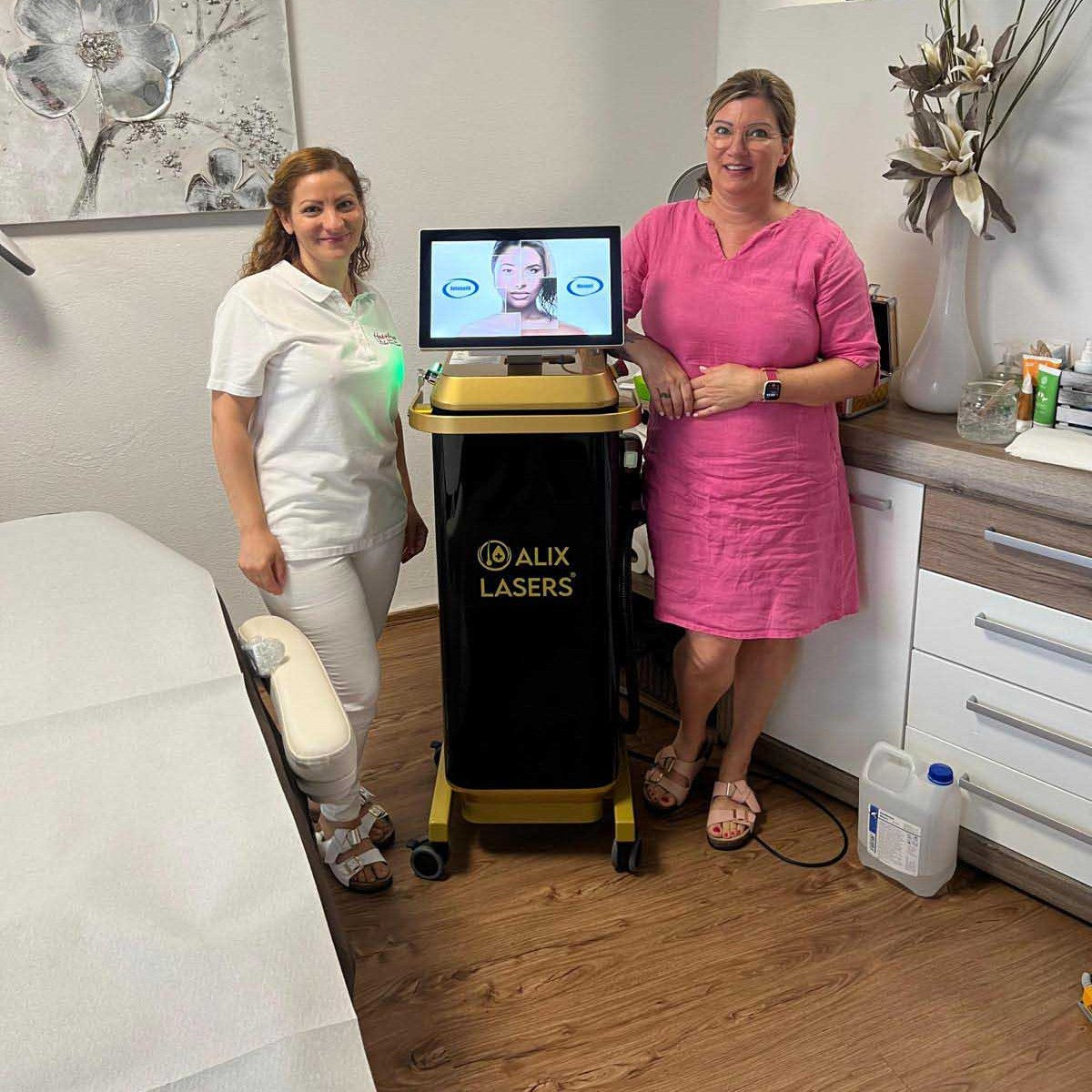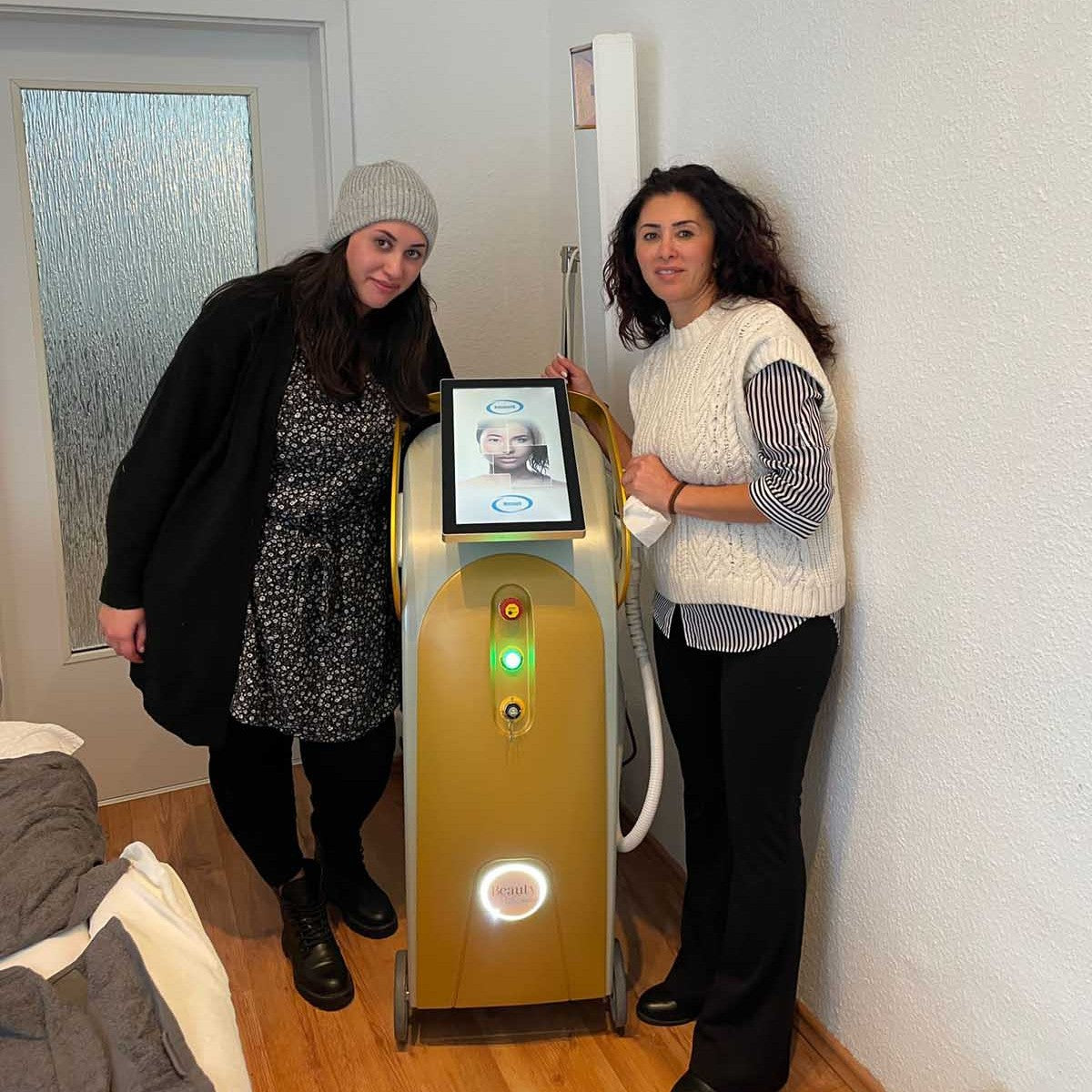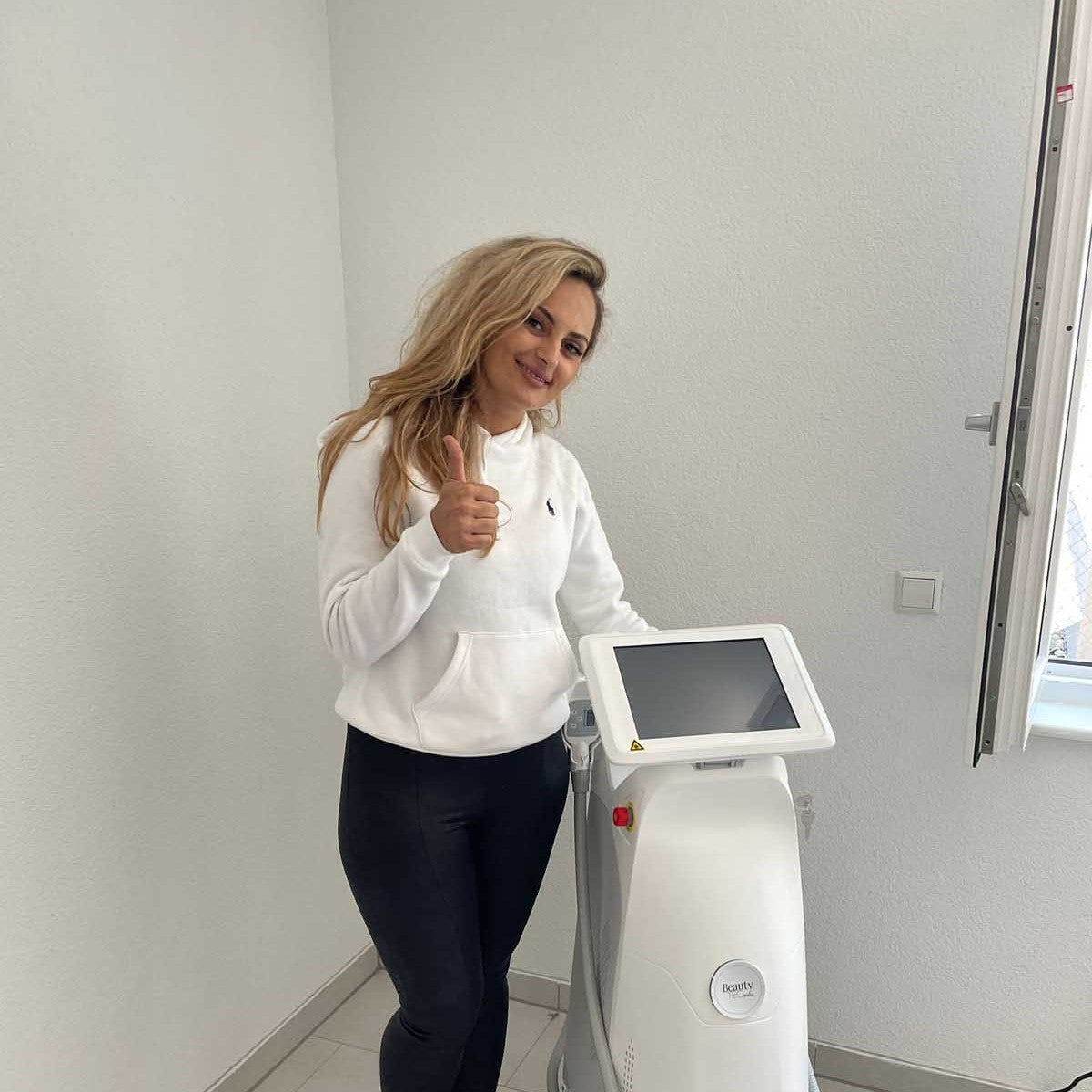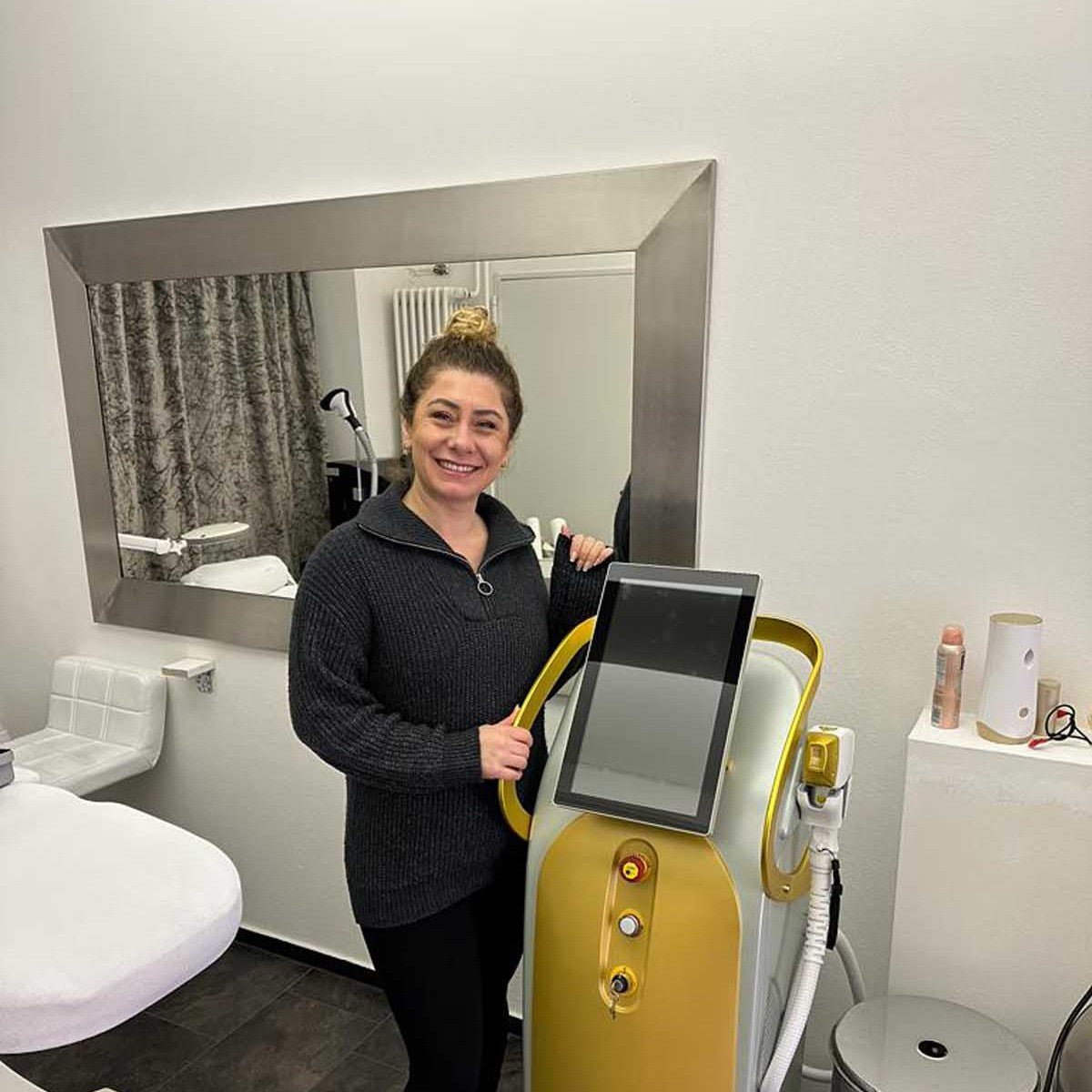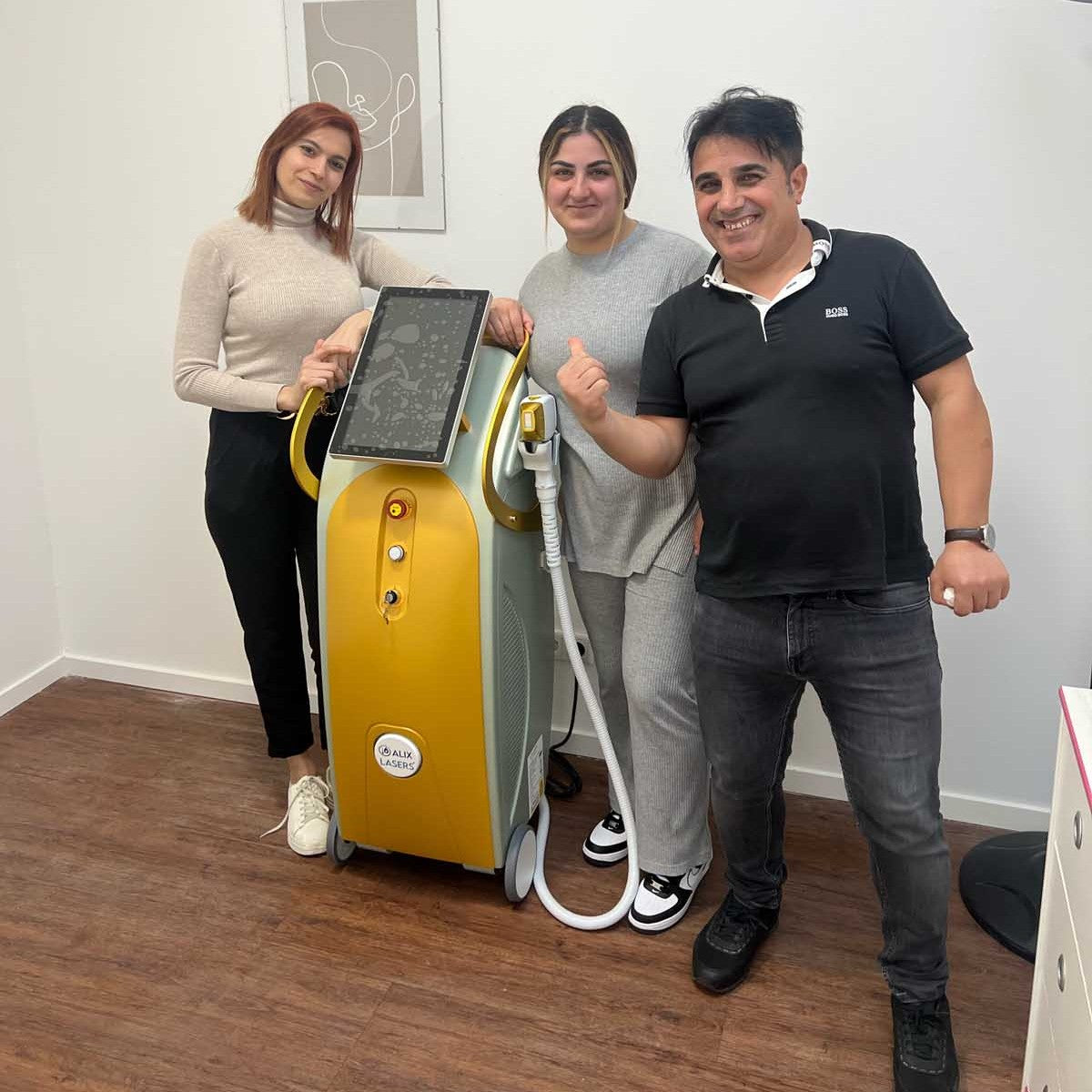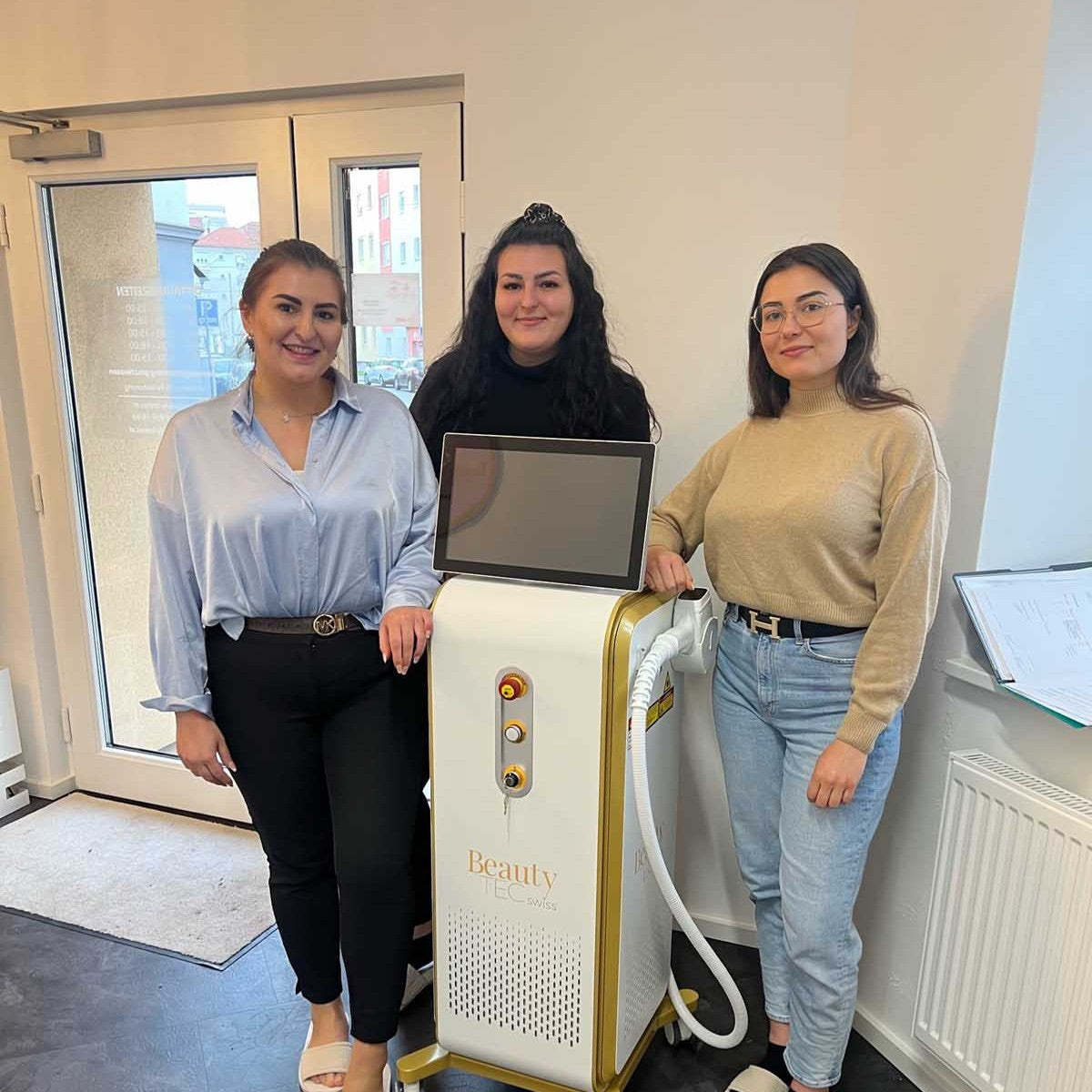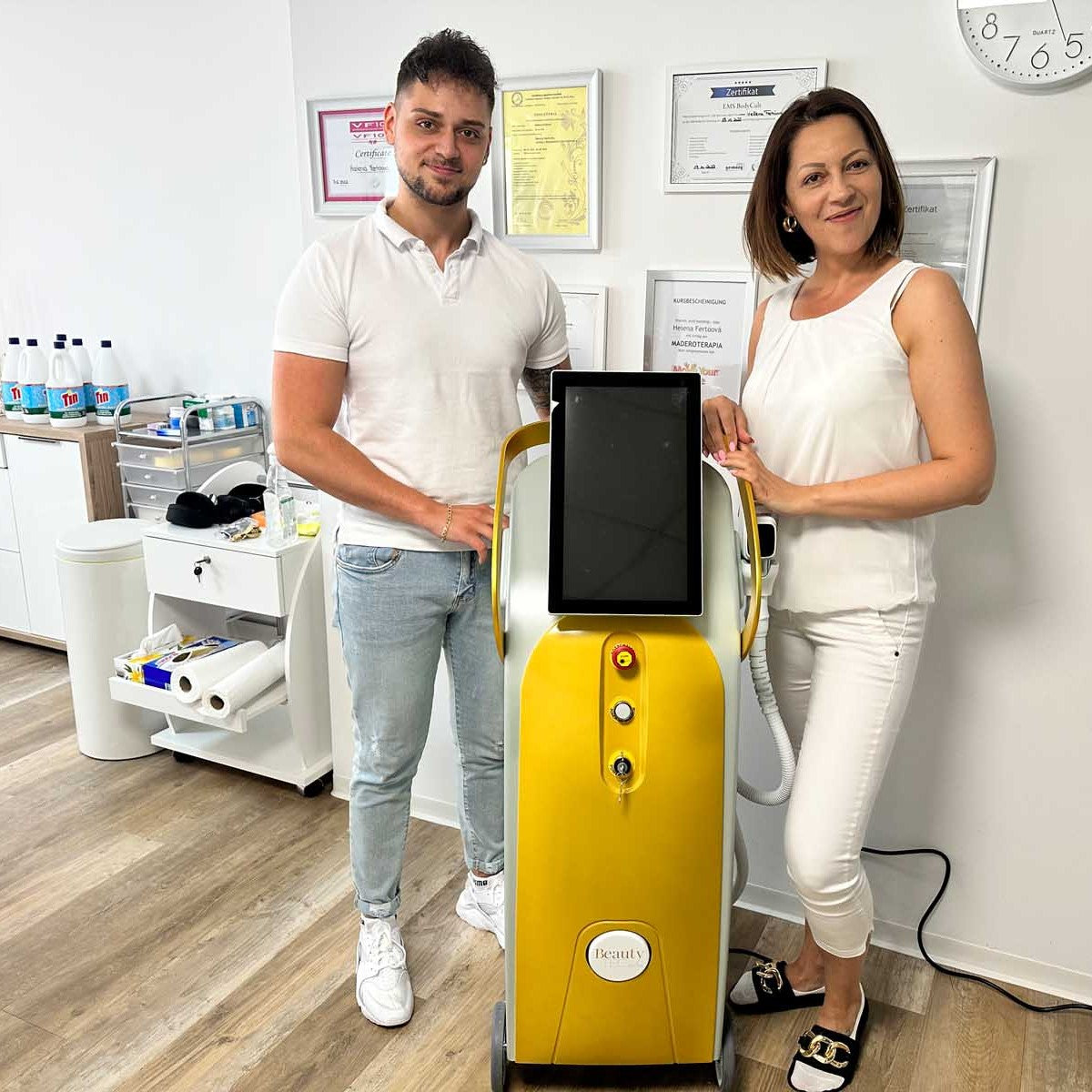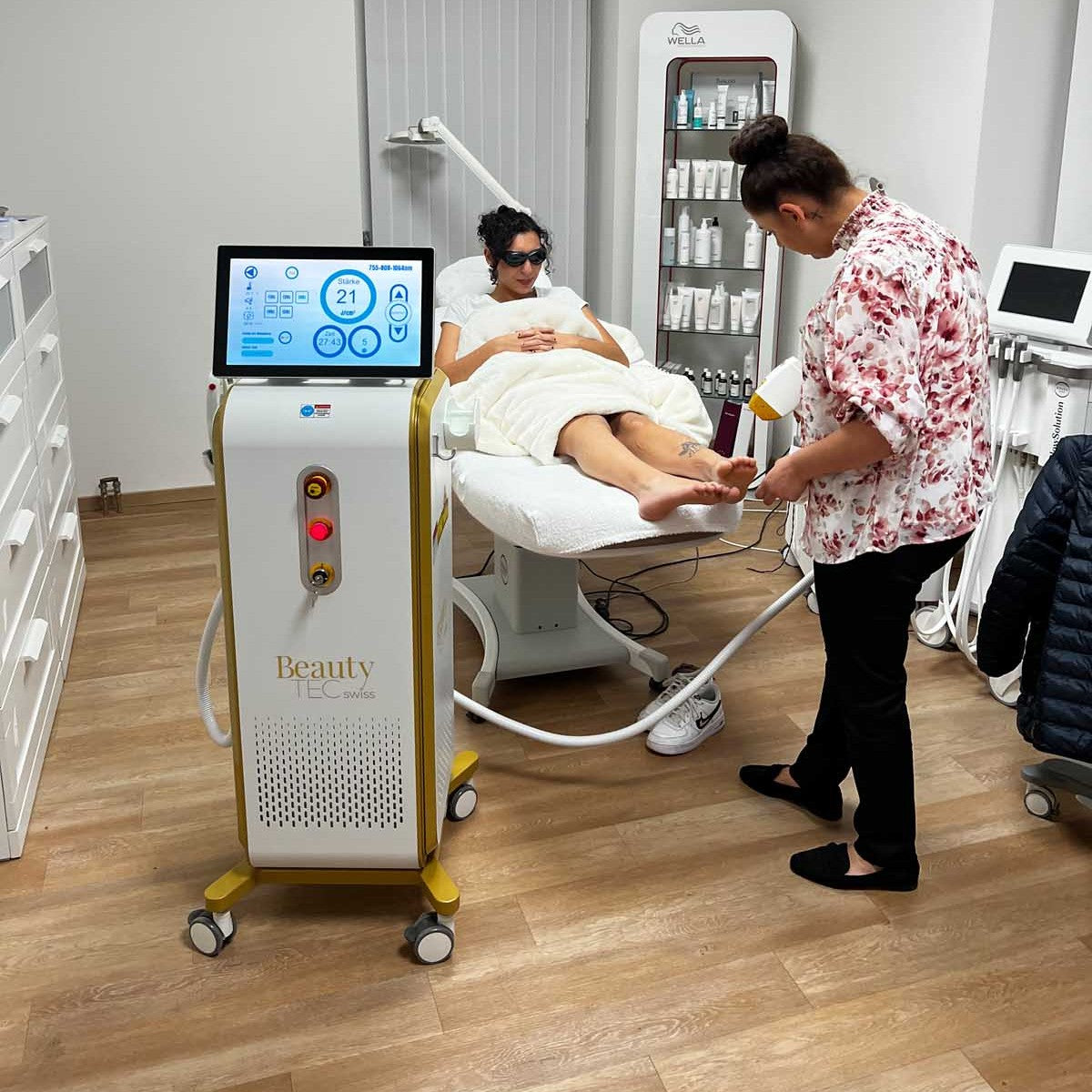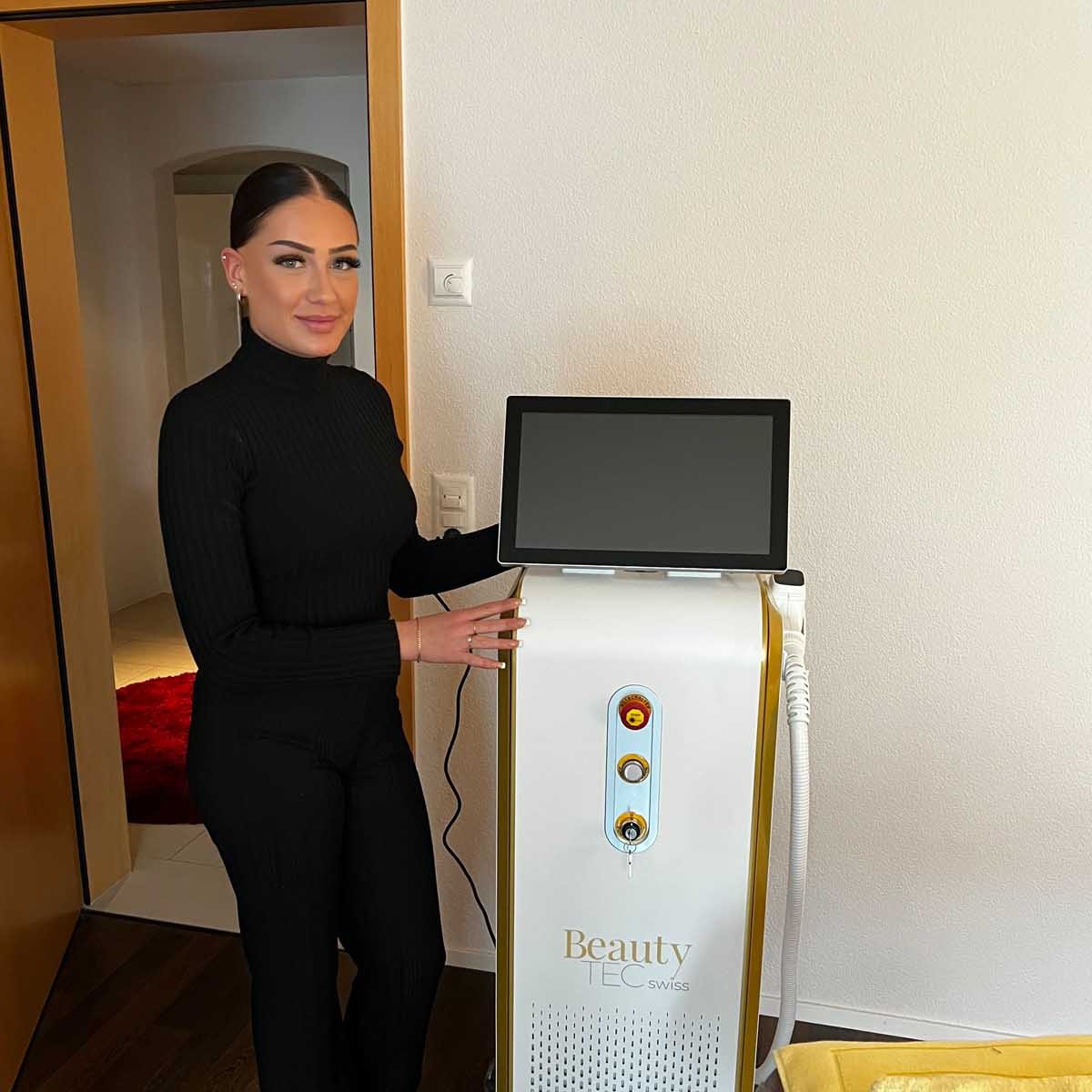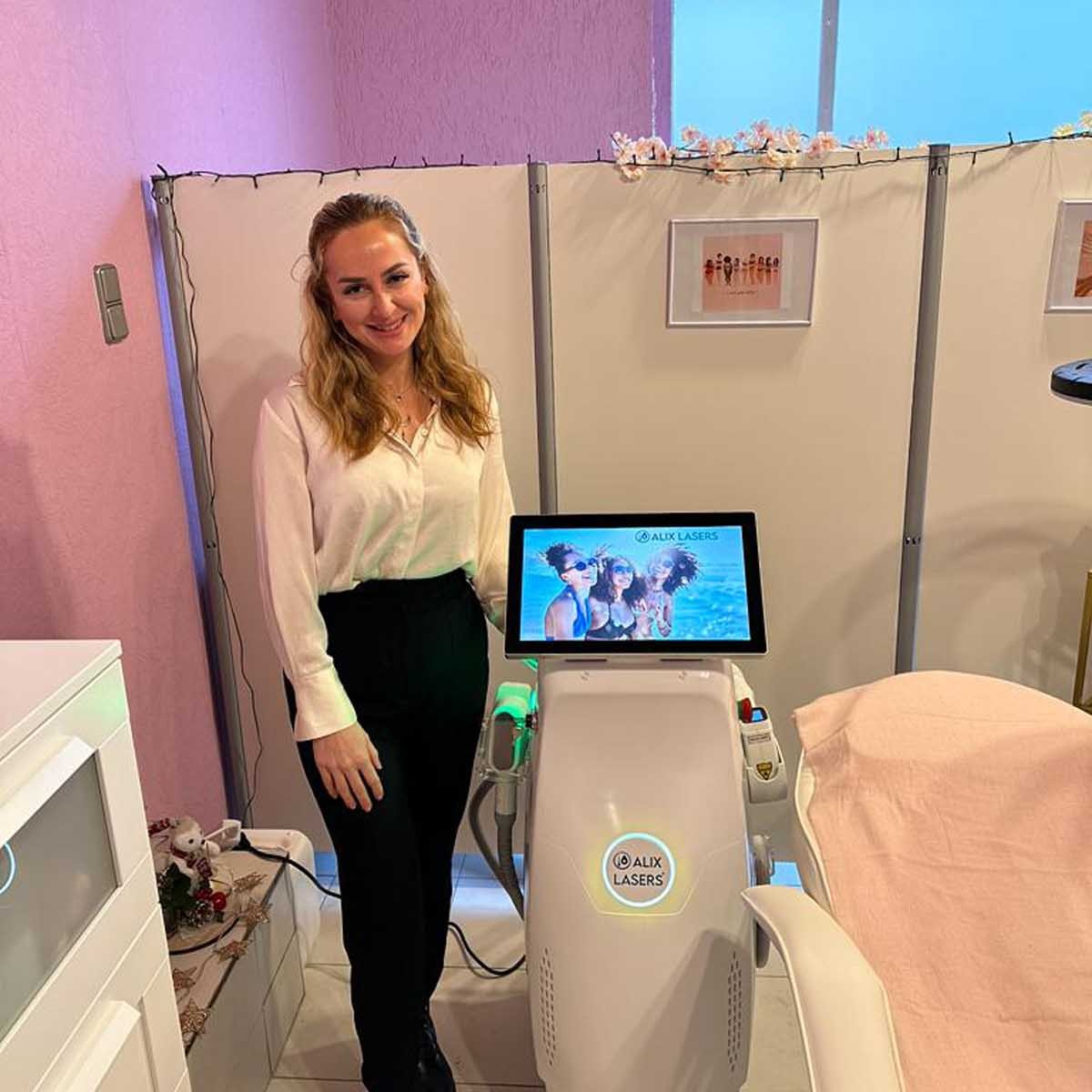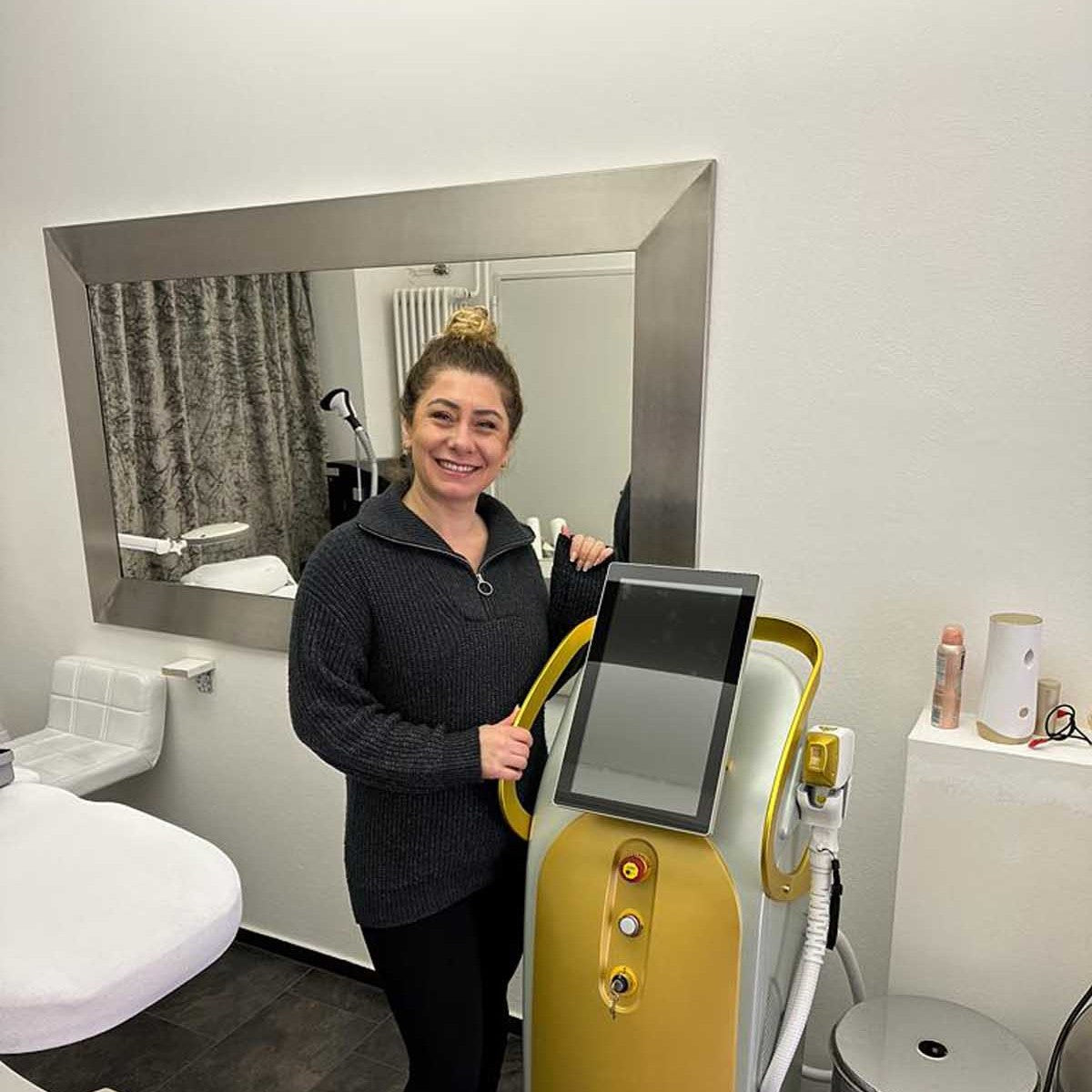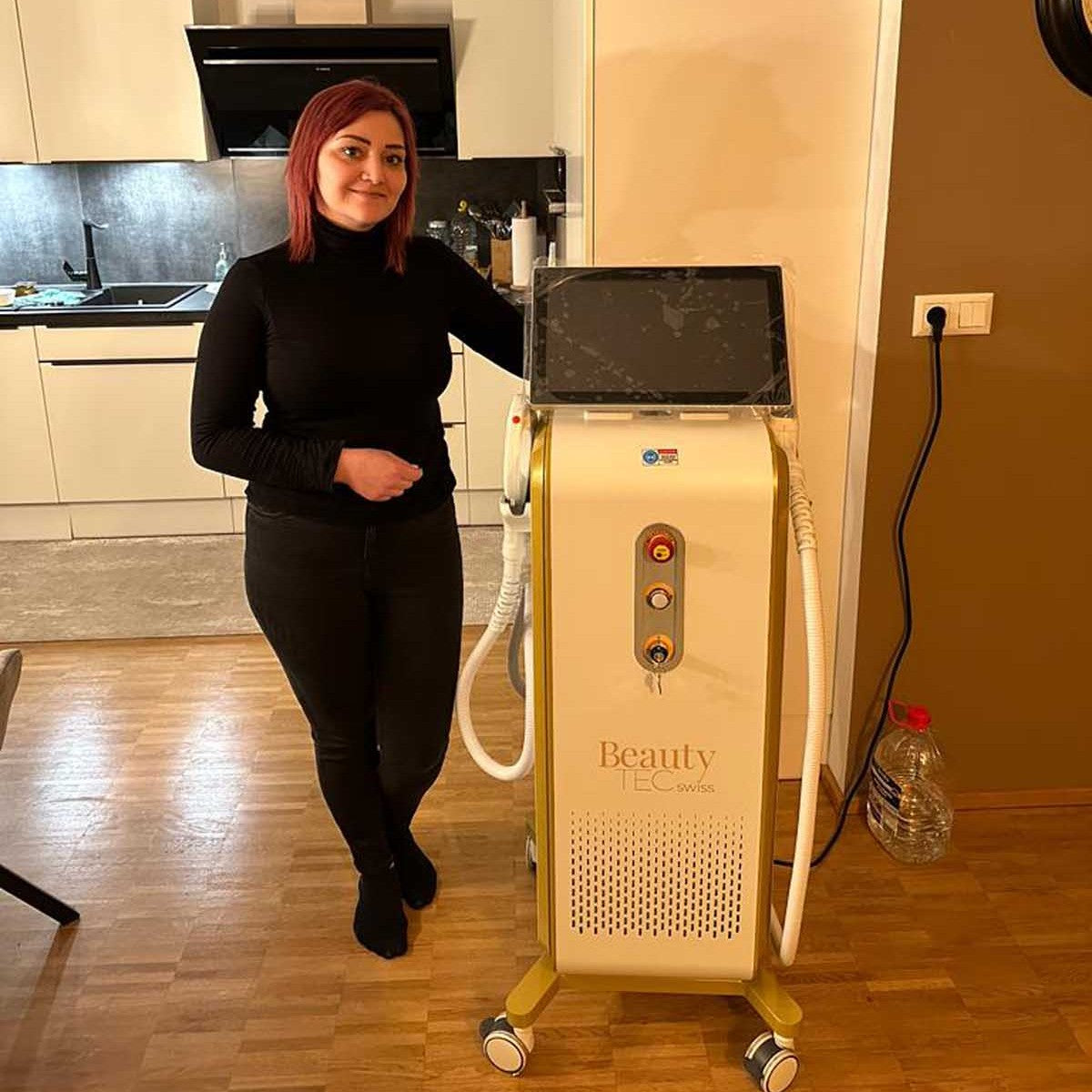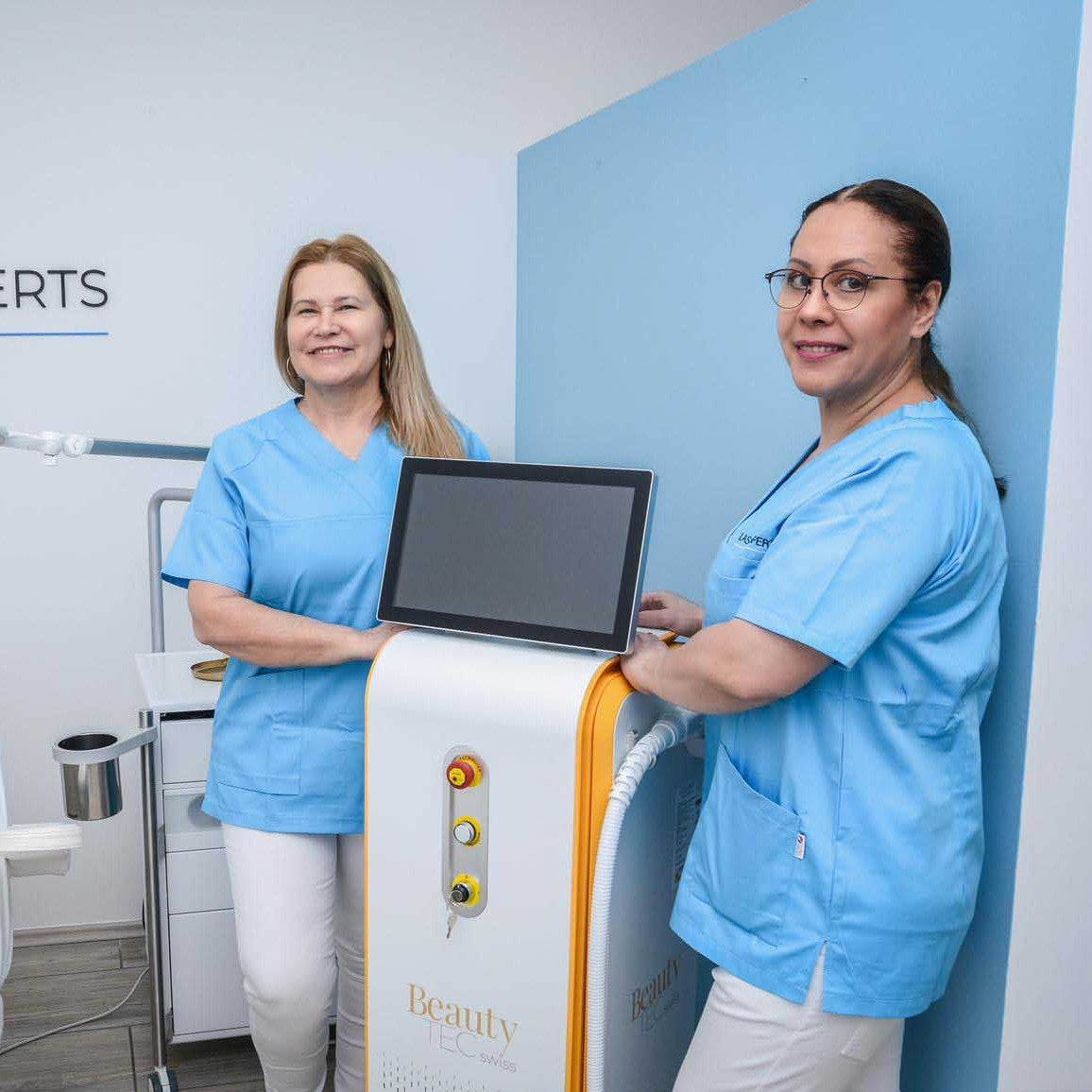Alix Lasers ® Zertifikate
Alix Lasers ® Geräte unterliegen den höchsten Sicherheitsstandards und besitzen weltweit Zulassungen, für einen sicheren Betrieb.
TÜV Süd alle Diodenlaser
Der Weg auf die unterschiedlichen Märkte ist gerade im Bereich Medizinprodukte mit strengen Anforderungen gepflastert: Die Produkte müssen höchste Qualitätsstandard erfüllen und ihr Qualitätsmanagement entsprechend gestaltet sein. Hier ist es sinnvoll und gut, einen erfahrenen Experten zu Rate ziehen zu können. So wie TÜV SÜD.
TÜV SÜD überprüft und zertifiziert seit über 30 Jahren Qualitätsmanagements für Medizinprodukte und verfügt nicht zuletzt dank stetiger Weiterbildung ihrer Spezialisten über das notwendige Know-how. Deshalb gehört TÜV SÜD in Ländern mit einer strengen Regulierung von Medizinprodukten zu den Marktführern. Qualitätsmanagement-Zertifikate bestätigen die Einhaltung einer ganzen Reihe internationaler Standards – allen voran ISO 13485. Sie als Hersteller verfügen damit über den Nachweis, dass bei der Herstellung Ihrer Medizinprodukte ein zertifiziertes Qualitätsmanagement angewandt wurde, das höchsten Anforderungen entspricht. Das fördert ihr Image als Hersteller, stärkt das Vertrauen von Behörden, Käufern und Anwendern in ihre Produkte und liefert klare Verkaufsargumente.
Medizinprodukte, die von Unternehmen hergestellt oder angeboten werden, die nicht über ein zertifiziertes Qualitätsmanagementsystem verfügen, haben es in der Regel schwerer, auf wichtigen Märkten zugelassen zu werden. Das kann zu Verzögerungen beim Markteintritt und zu Umsatzverlusten führen.
ISO 13485 Prüfsiegel / Prüfnorm alle Diodenlaser
Zertifizierungen schaffen Vertrauen – und das ist insbesondere bei Medizinprodukten entscheidend. Die internationale Norm EN ISO 13485 ist der Standard für Qualitätsmanagementsysteme im Medizinproduktebereich. Diese Zertifizierung ist die Voraussetzung für den Markteintritt in viele Länder. Obwohl sie ein eigenständiges Dokument ist, ist die ISO 13485 in weiten Teilen mit der ISO 9001 identisch. Während die ISO 9001 die Anforderung stellt, dass die Organisation insgesamt eine kontinuierliche Verbesserung anstreben muss, bezieht sich der Kernanspruch der ISO 13485 auf die Produktsicherheit. Hier soll die Erfüllung der Anforderungen an das Produkt durch die Wirksamkeit der eingeführten Prozesse sichergestellt werden. Die ISO 13485 enthält detaillierte Forderungen zu Themen, die die Herstellung und das Inverkehrbringen von Medizinprodukten betreffen.
Medizinische Geräte – Prüfsiegel alle Diodenlaser
Die Norm EN ISO 13485 „Medizinprodukte: Qualitätsmanagementsysteme – Anforderungen für regulatorische Zwecke“ befasst sich mit den Anforderungen, die Hersteller und Anbieter von Medizinprodukten bei der Entwicklung, Umsetzung und Aufrechterhaltung von Managementsystemen für die Medizinproduktebranche erfüllen müssen. Die ursprünglich in den 1990er Jahren entwickelte Norm enthält Anforderungen an Qualitätsmanagementsysteme, die Kundenanforderungen, aber auch die regulatorischen Anforderungen der Europäischen Union (EU), Kanadas und anderer wichtiger Märkte weltweit erfüllen.
Die EN ISO 13485 ähnelt in ihrem Anwendungsbereich und Zweck der Norm ISO 9001. Sie enthält jedoch zusätzliche, spezifische Anforderungen für Medizinprodukte und formuliert manche Vorgaben der ISO 9001 um. In den meisten Märkten ist daher eine Zertifizierung nach ISO 9001 kein adäquater Ersatz für eine Zertifizierung nach den Anforderungen der EN ISO 13485.
ECM – Ente Certificazione Macchine
Ente Certificazione Macchine ist eine bekannte Stelle, die von der Europäischen Kommission autorisiert ist, EG-Zertifikate gemäß der Richtlinie 93/42/EWG (MDD) auszustellen. [Siehe die ECM-Akkreditierungen auf der Datenbank Nando Information System qui der Europäischen Kommission]
Das CE-Zeichen Das CE-Zeichen ist das obligatorische Zertifizierungszeichen, das jedes medizinische Gerät besitzen muss, um in der Europäischen Union vermarktet und verwendet werden zu dürfen. Das CE-Zeichen erklärt, dass das Produkt den geltenden europäischen Richtlinien entspricht. Die Medizinprodukterichtlinie 93/42/EWG (MDD) listet die grundlegenden Sicherheits-, Wirksamkeits- und Qualitätsanforderungen auf, die ein Medizinprodukt erfüllen muss, um das CE-Zeichen zu erhalten und auf den europäischen Markt gebracht werden zu können.
EU-Verordnung 765/2008
Die CE-Kennzeichnung zeigt an, dass die Maschine die Anforderungen der Maschinenrichtlinie erfüllt. Das gilt auch für alle anderen zutreffenden EG-Richtlinien. Jede Maschine darf mit genau einem CE-Zeichen versehen werden. Die CE-Kennzeichnung muss dabei gleichberechtigt neben der Angabe des Herstellers stehen und in der gleichen Technik angebracht sein.
CE steht für Communauté Européenne (Europäische Gemeinschaft). Die Kennzeichnung sagt aus, dass ein Produkt bzw. eine Maschine mit den maßgeblichen europäischen Richtlinien übereinstimmt. Damit ist das 1995 eingeführte CE-Zeichen als “Reisepass” für Maschinen zu verstehen, denn mit ihm können Maschinen in der EU sowohl vermarktet als auch betrieben werden. Wichtig ist, dass die CE-Kennzeichnung nicht mit einem Gütesiegel oder Qualitätszeichen verwechselt werden darf.
FDA
Die Zulassung durch die Food and Drug Administration (FDA) ist eine Voraussetzung, um Medizinprodukte in den USA zu vertreiben; die andere ist die Zusammenarbeit mit einem qualifizierten Distributionspartner.
Fast alle Medizinproduktehersteller, die den amerikanischen Markt beliefern, müssen ein Qualitätsmanagementsystem implementieren, das die FDA-Vorschrift QSR 21CFR820 bzw. die Quality System Regulation erfüllt. Die Anforderungen der FDA QSR sind ähnlich wie die der europäischen ISO 13485; gleichzeitig gibt es Besonderheiten, und die FDA erkennt das ISO-13485-Zertifikat nicht an.


